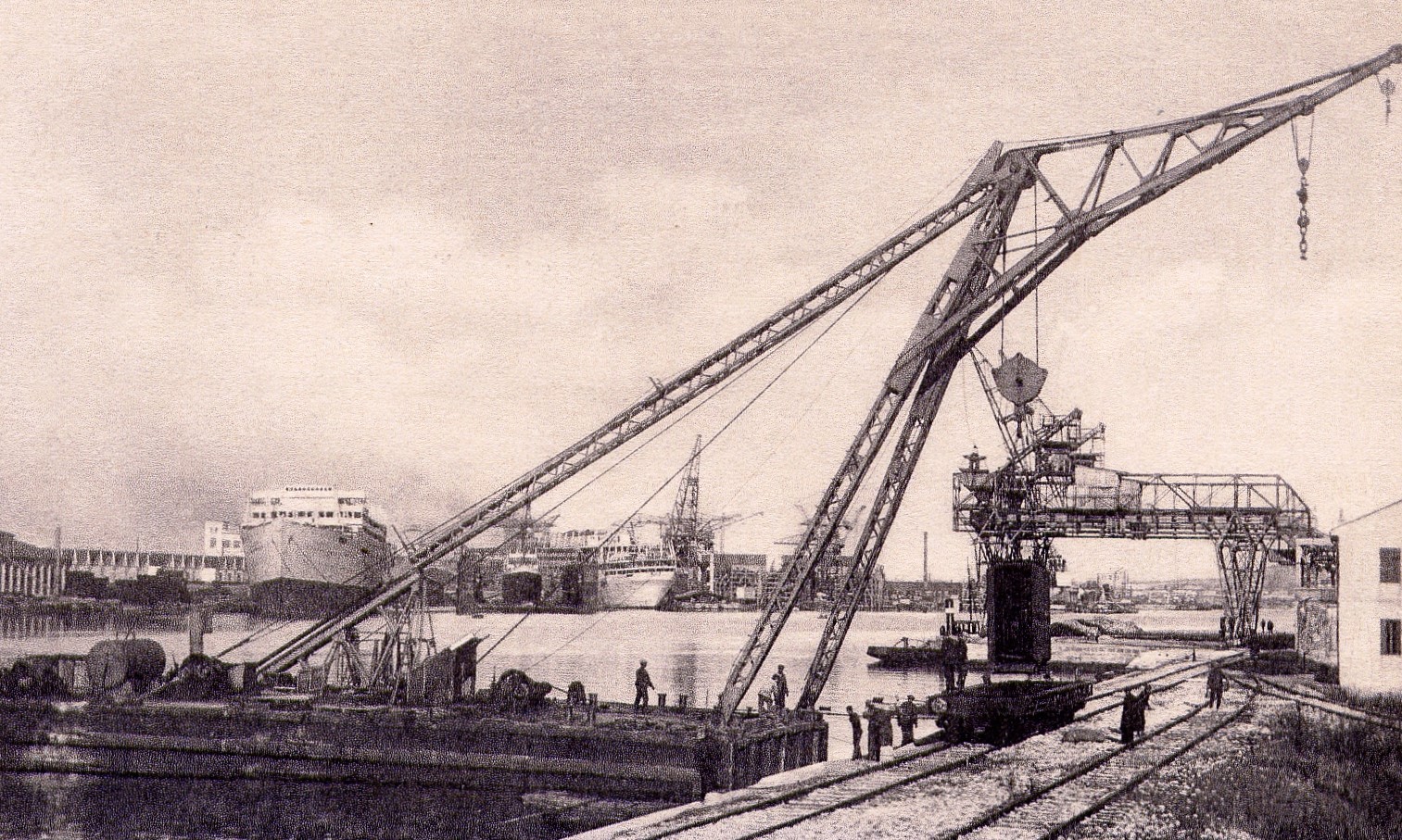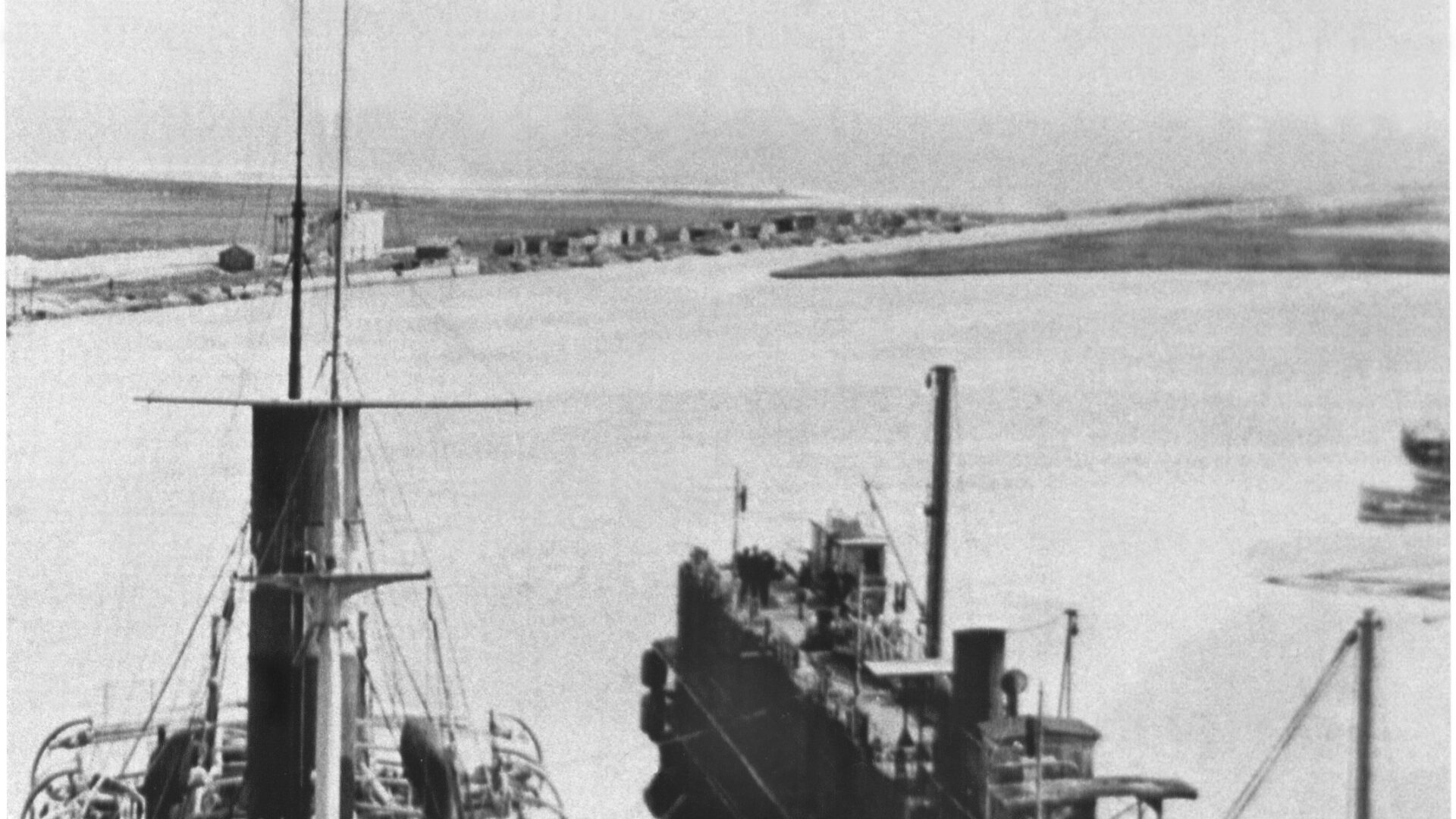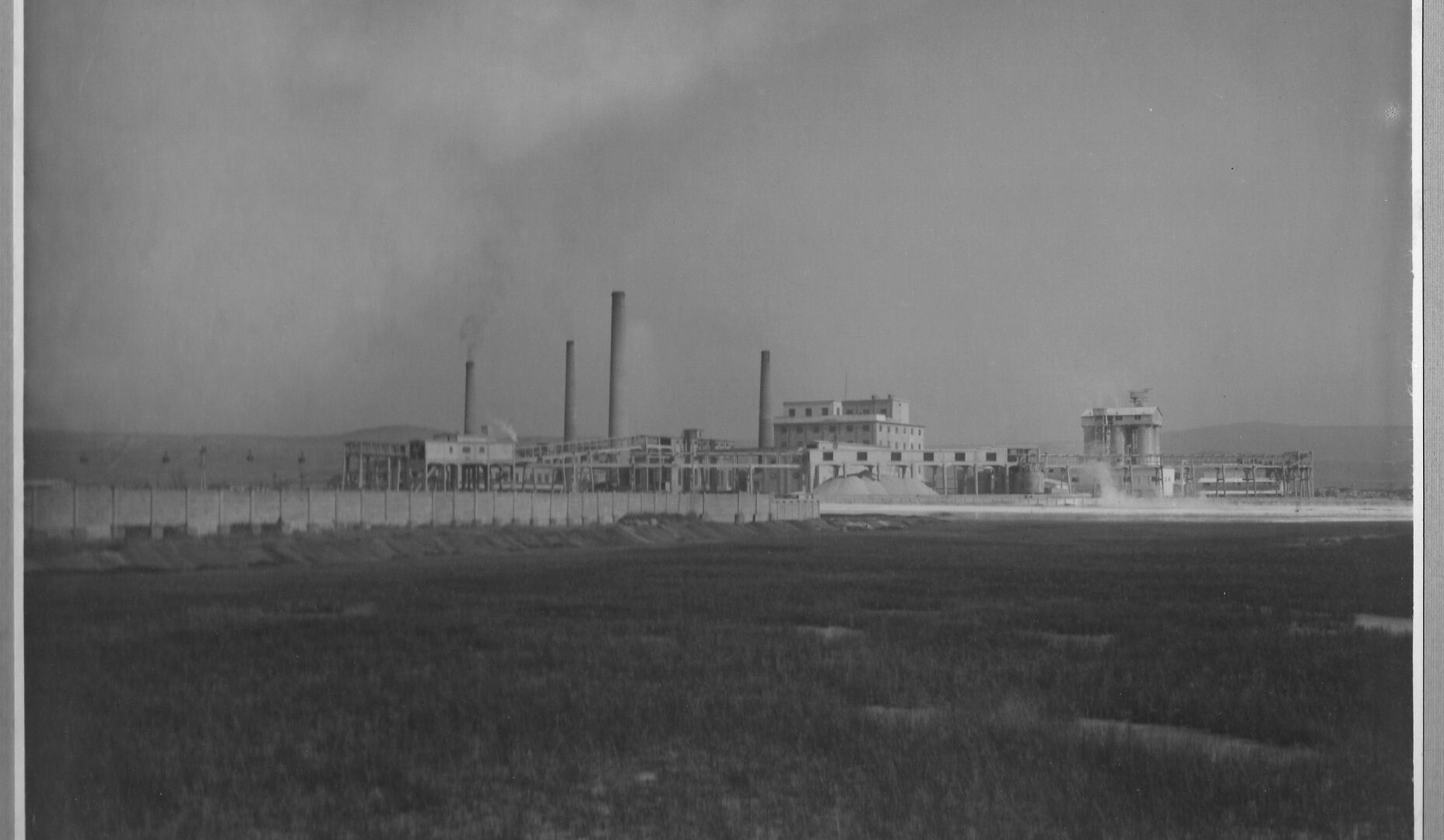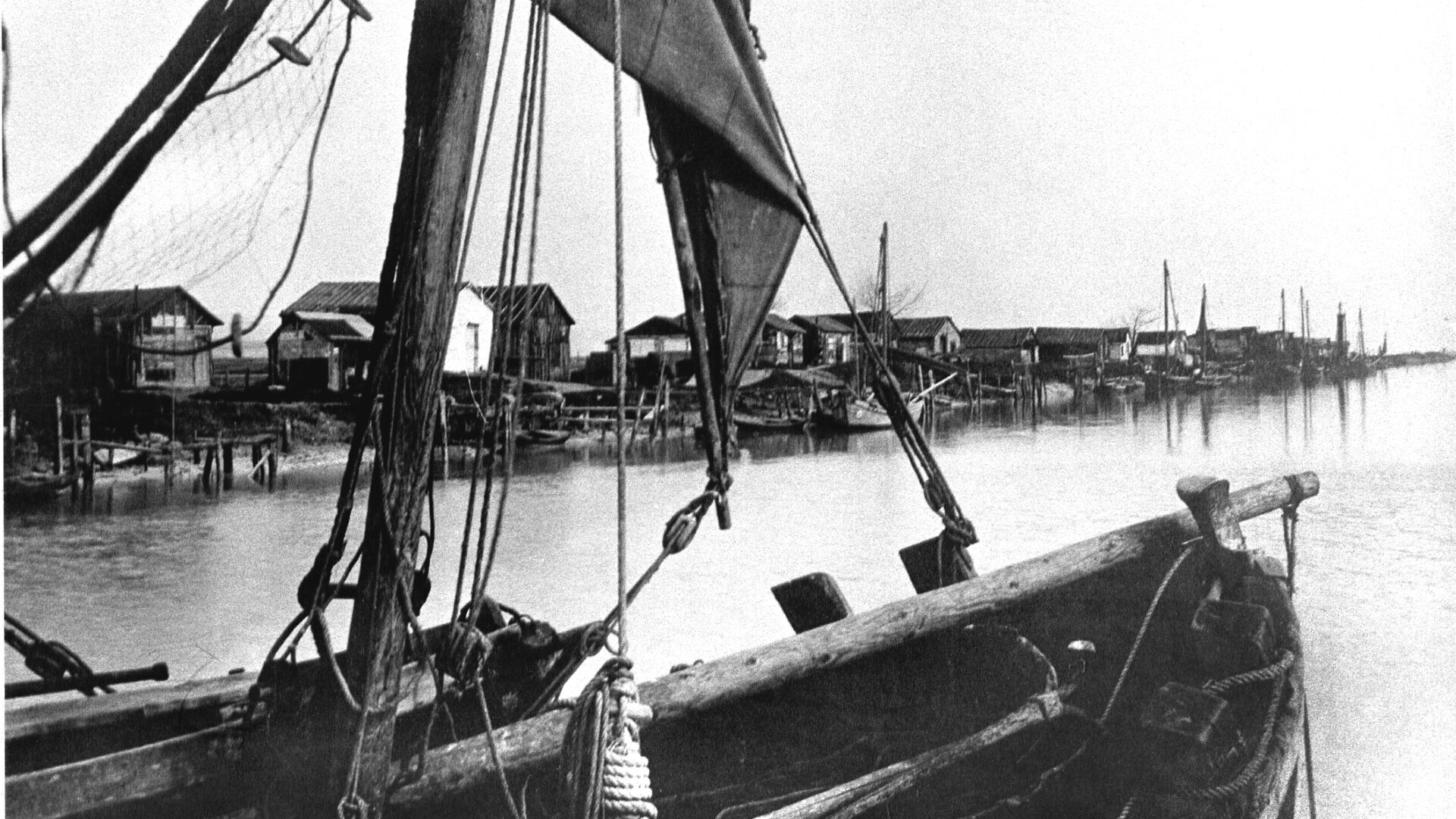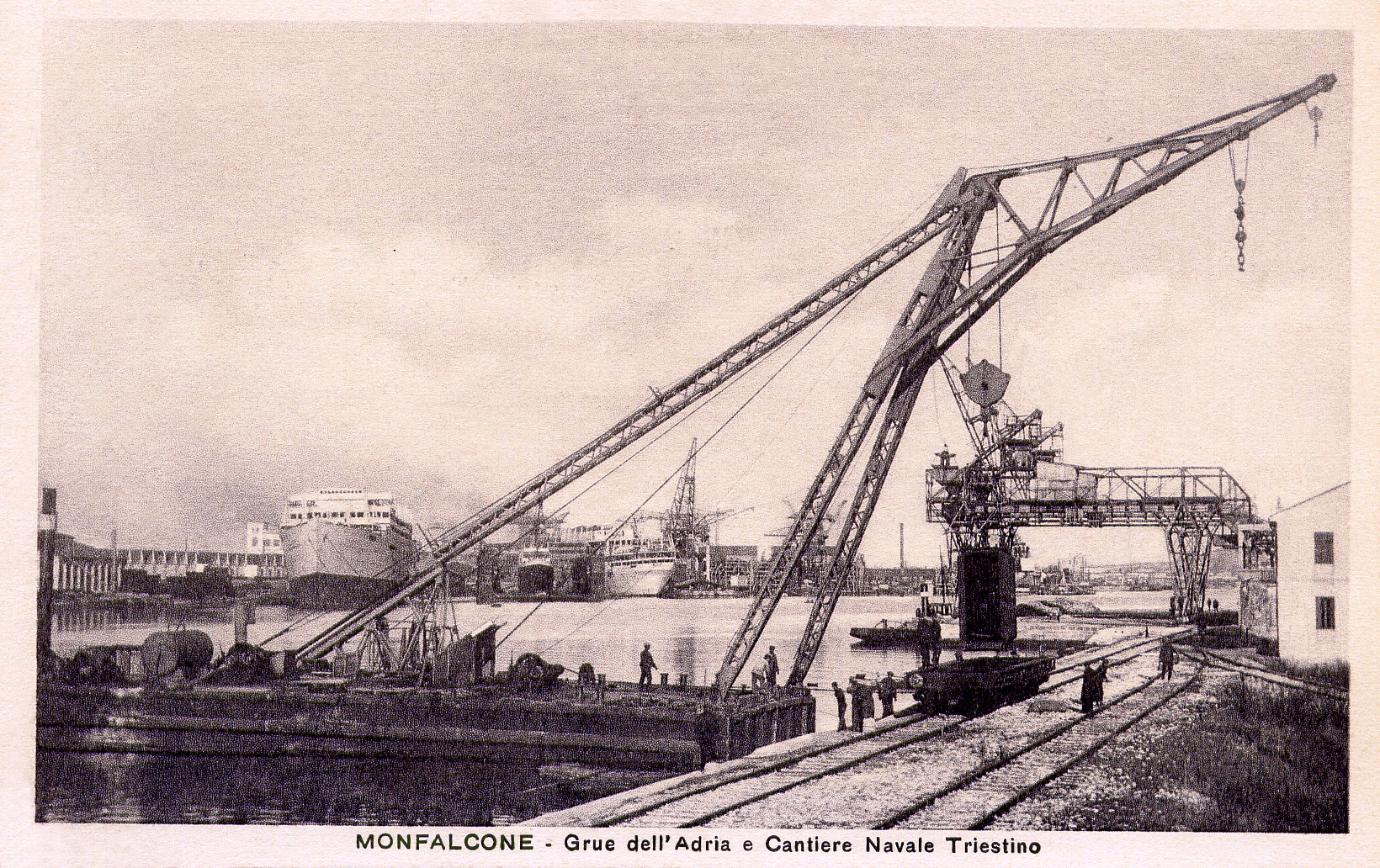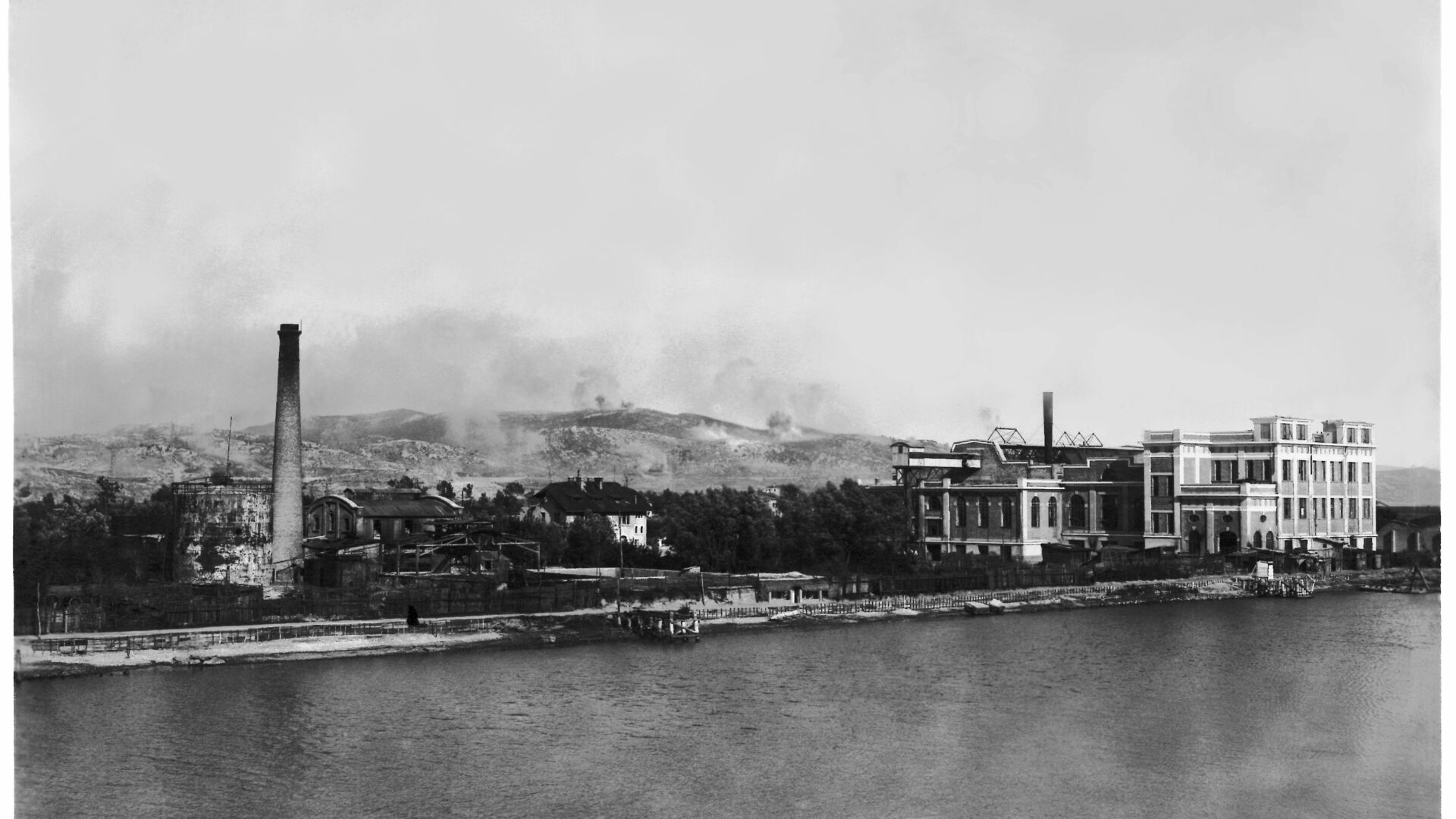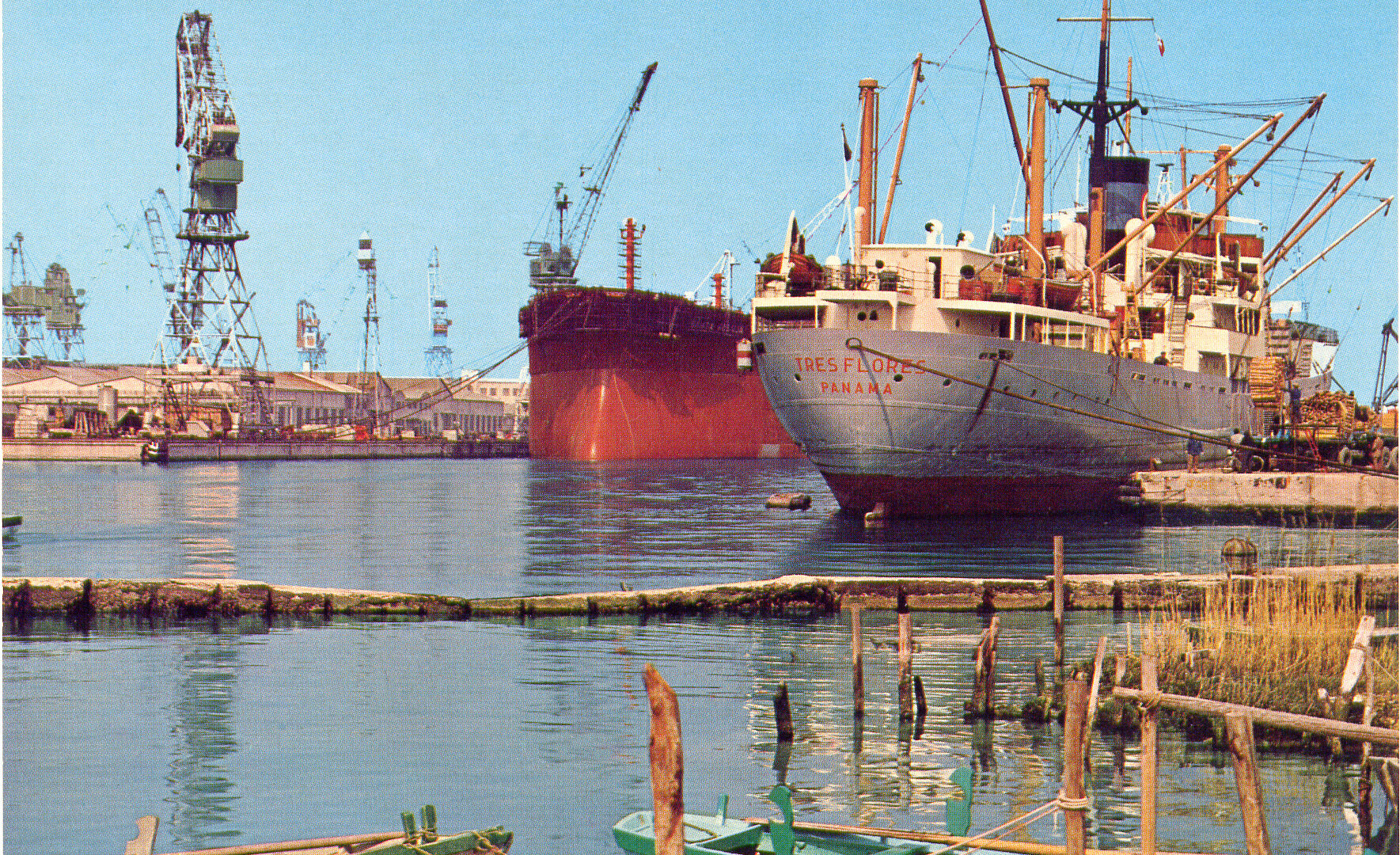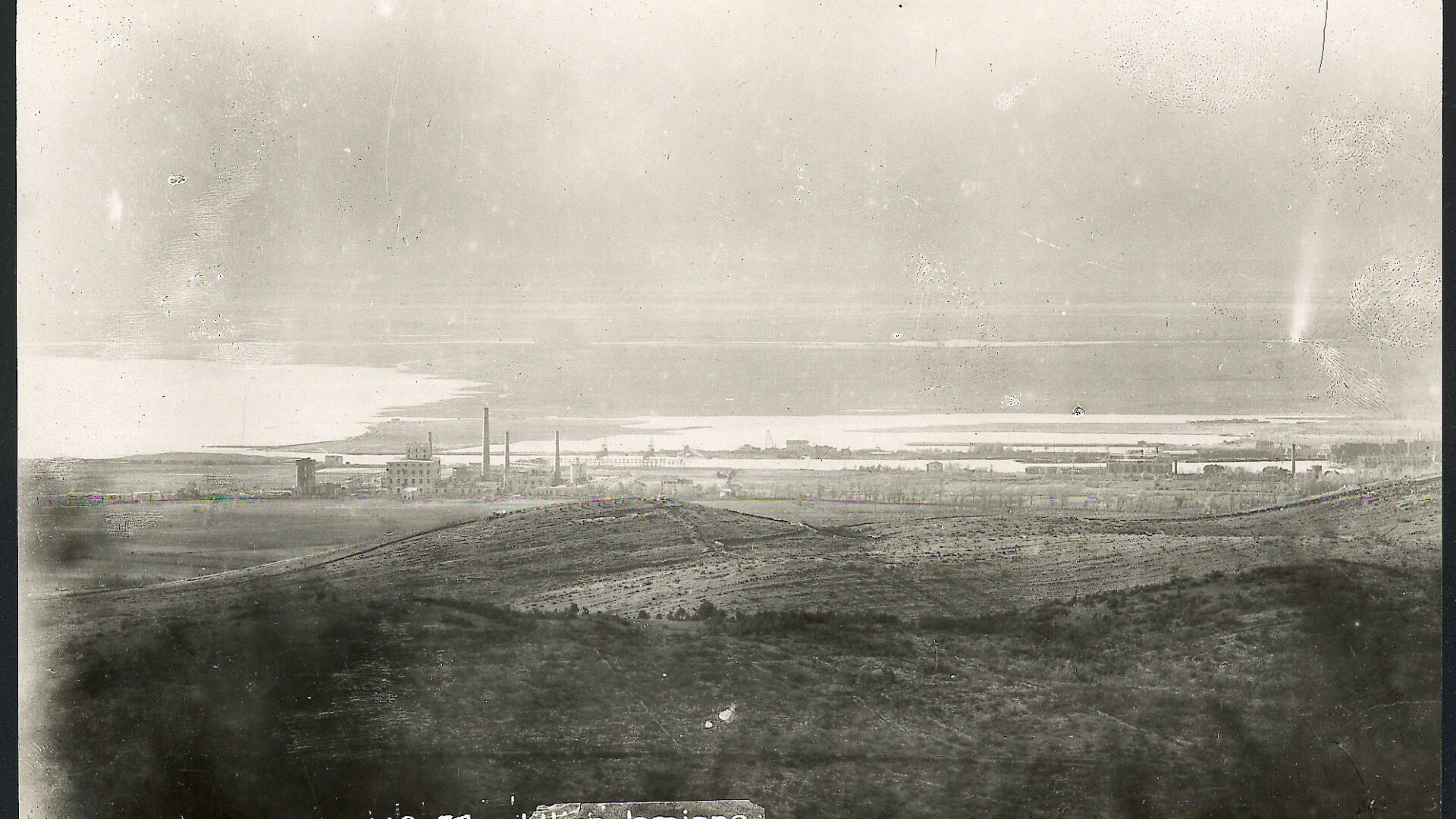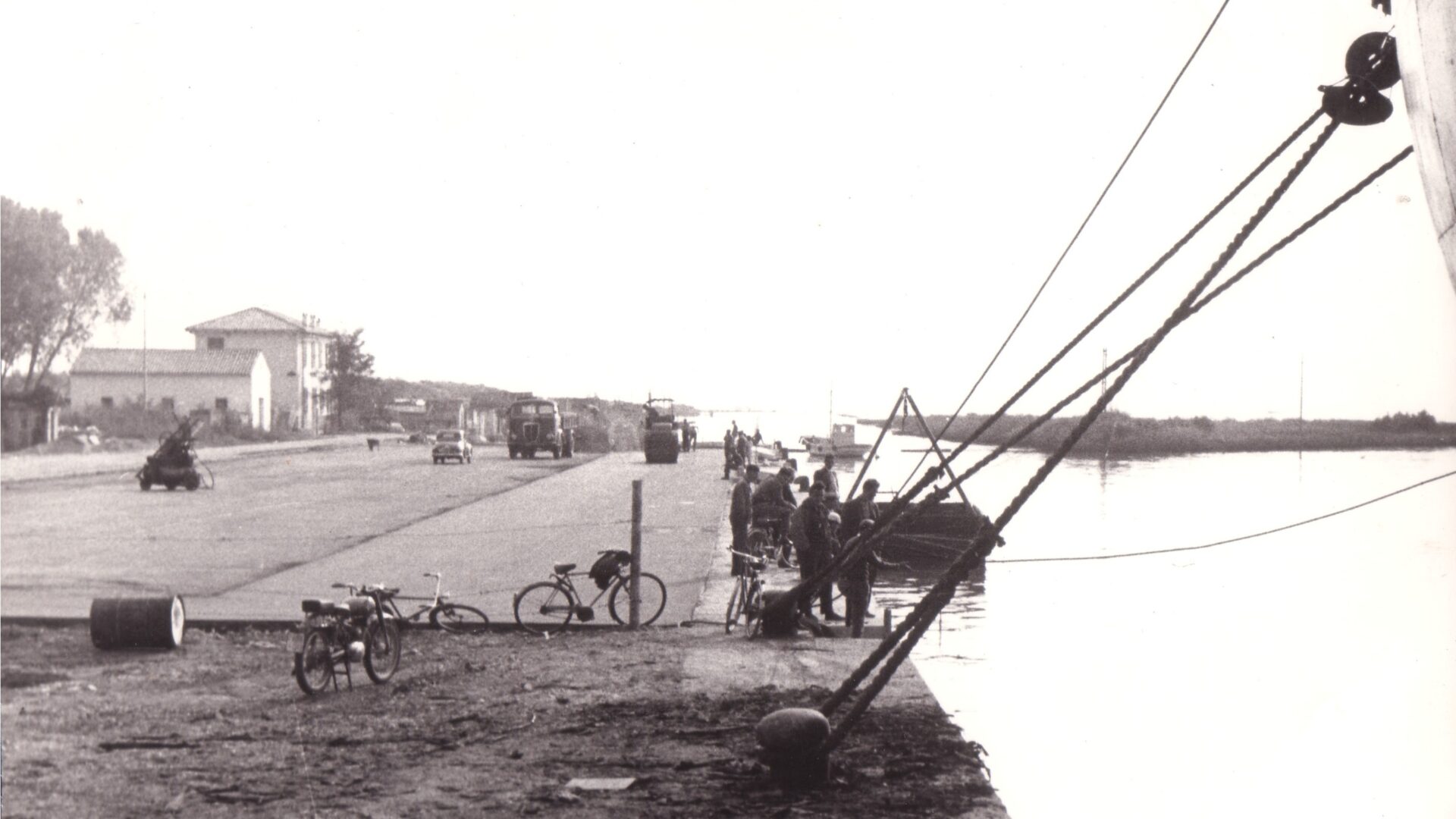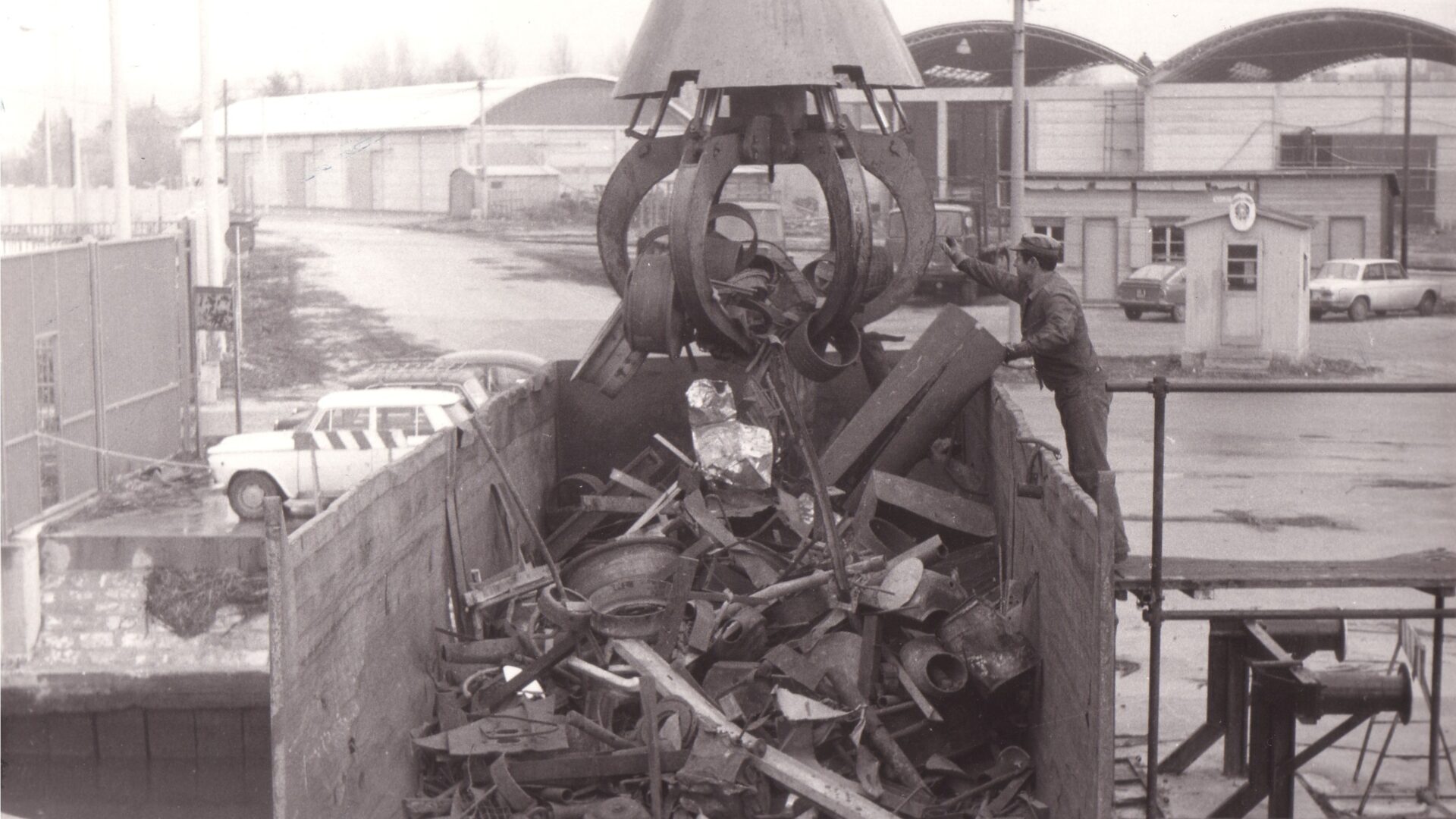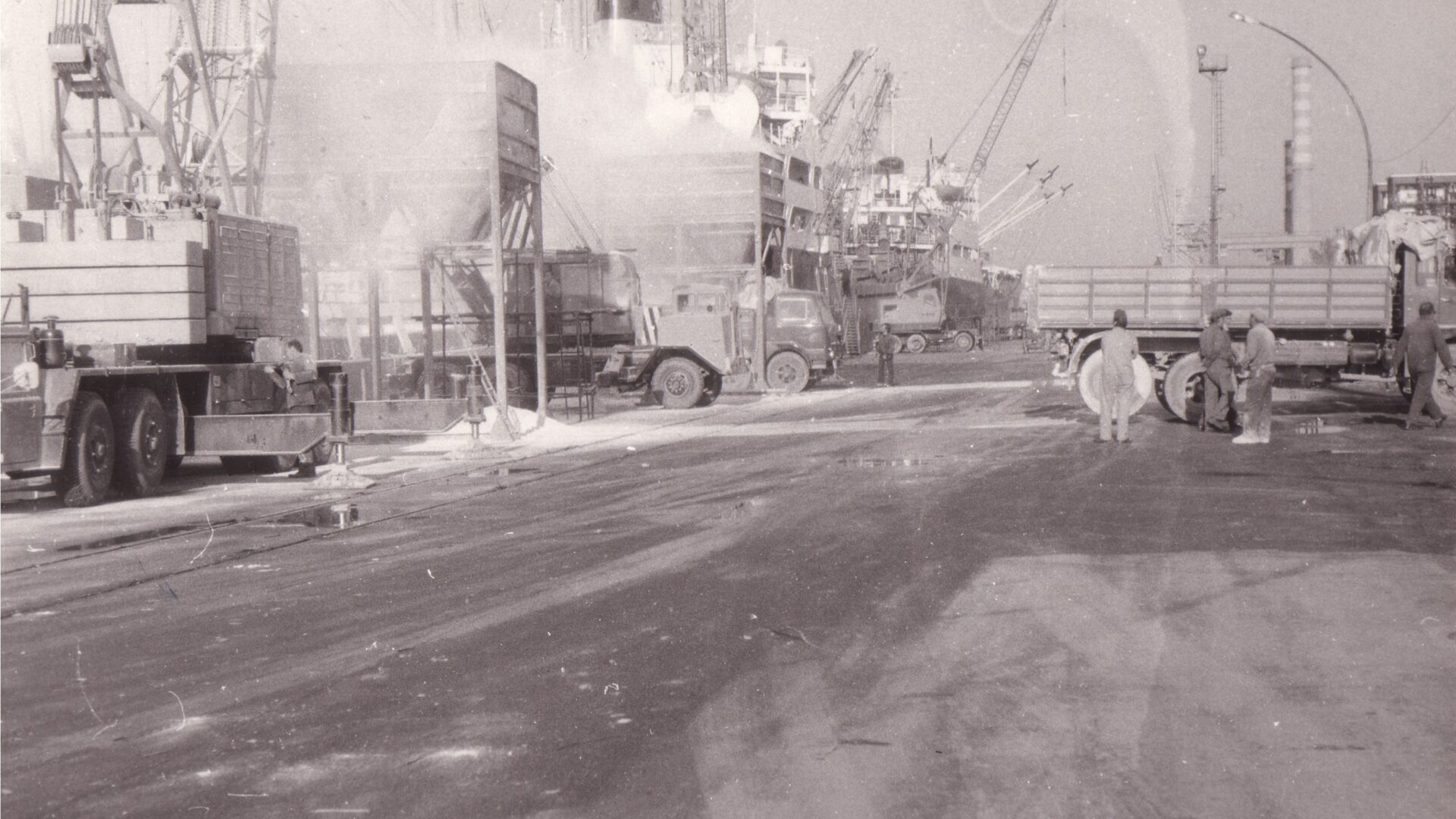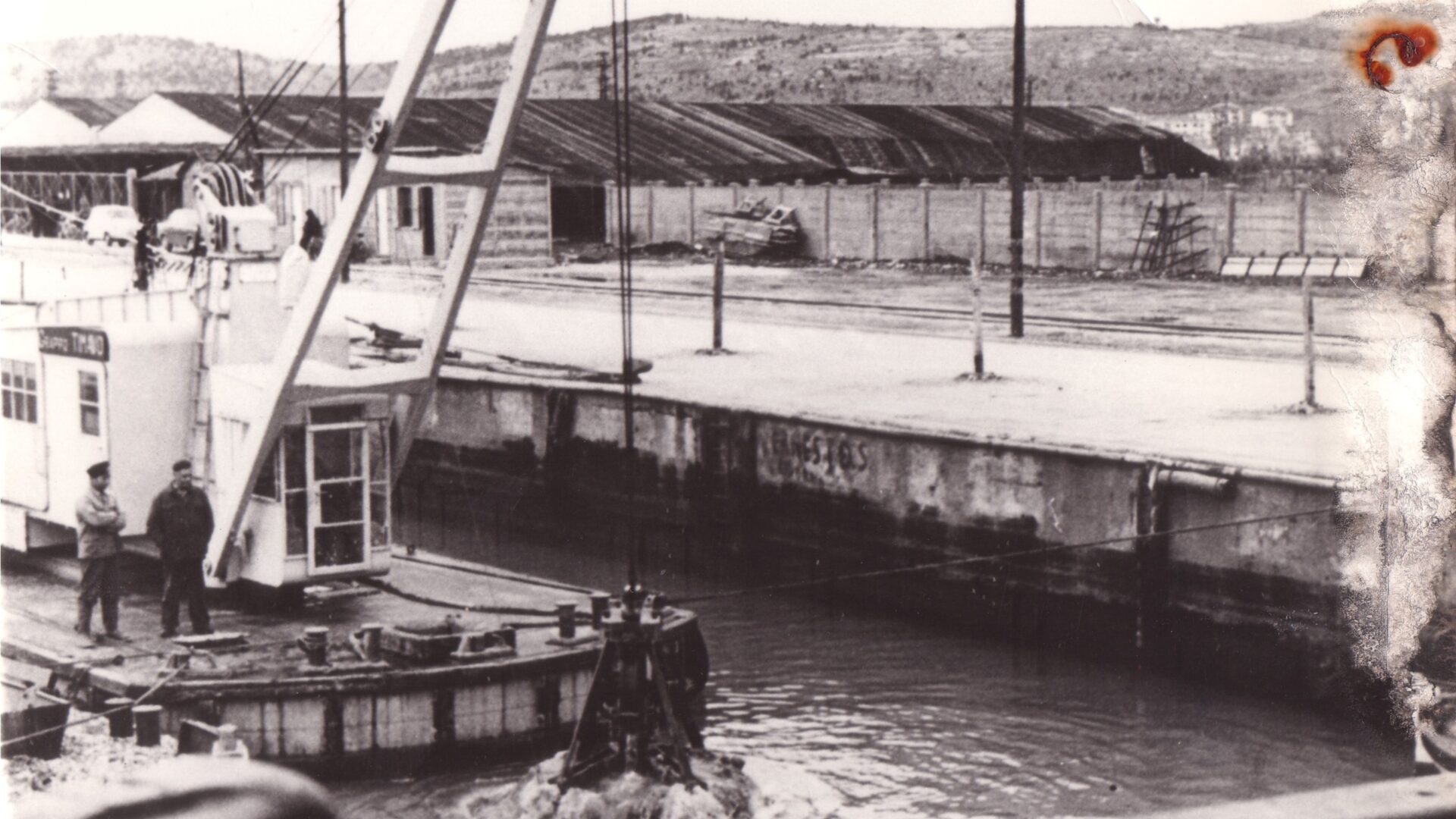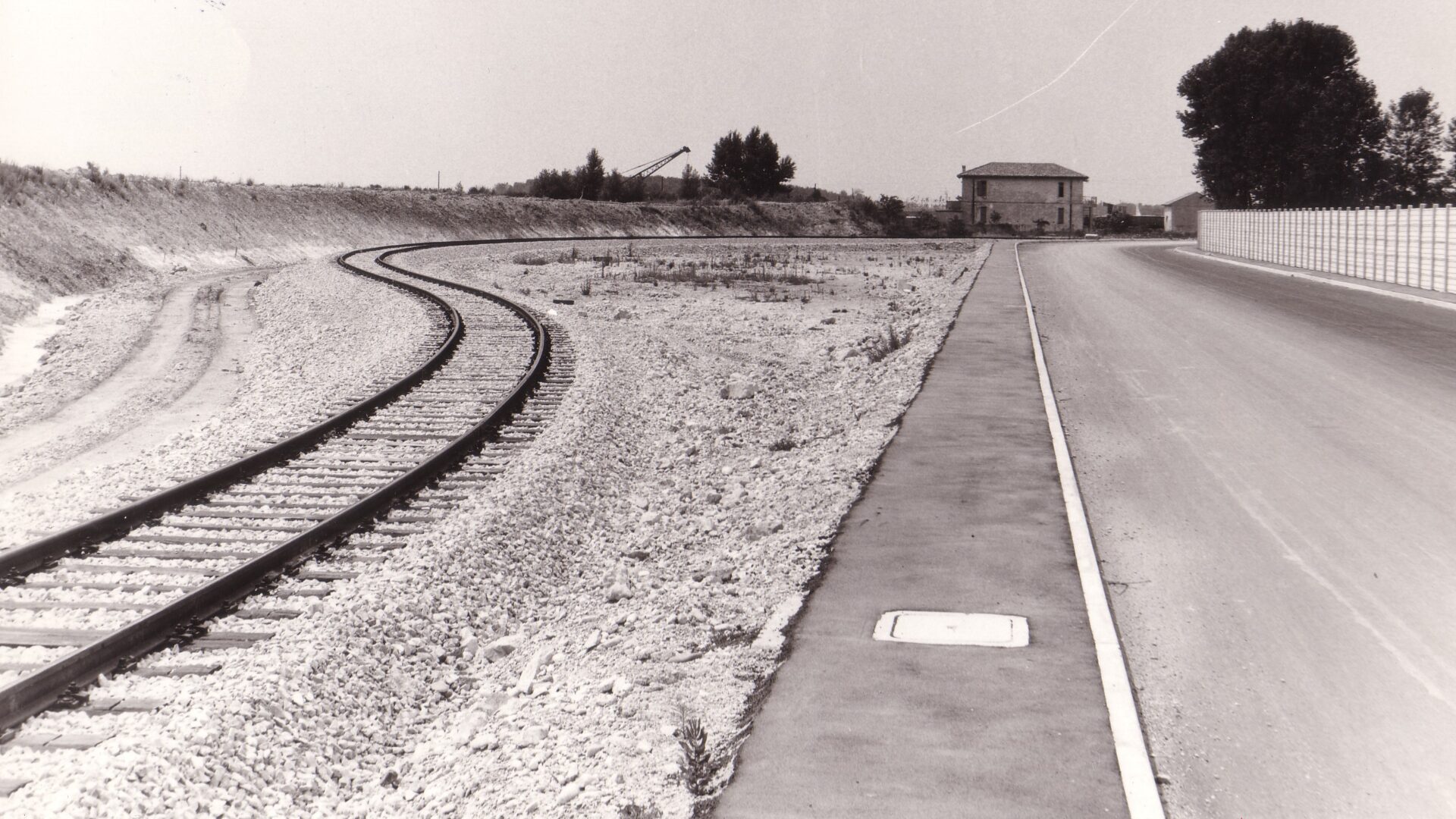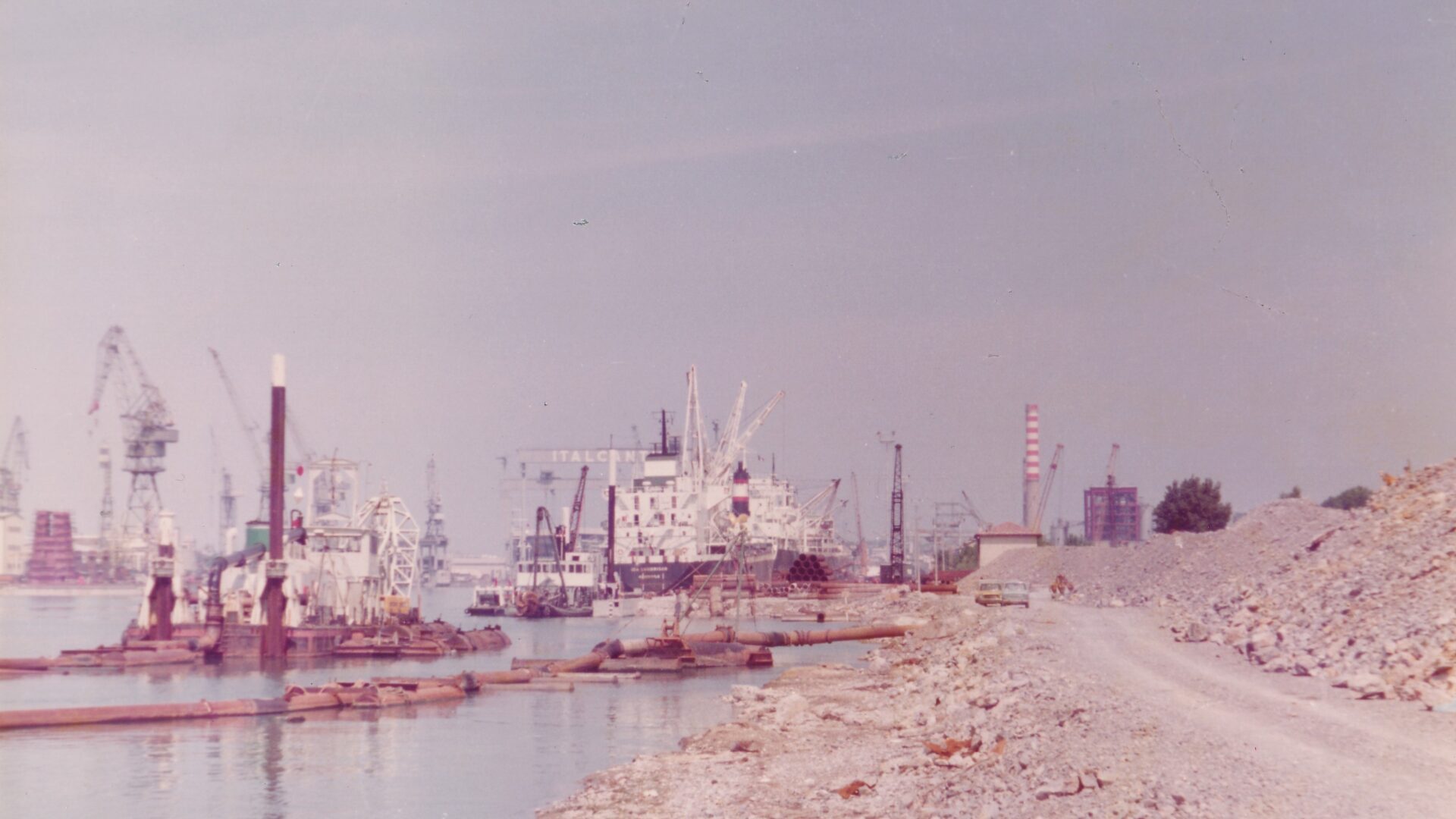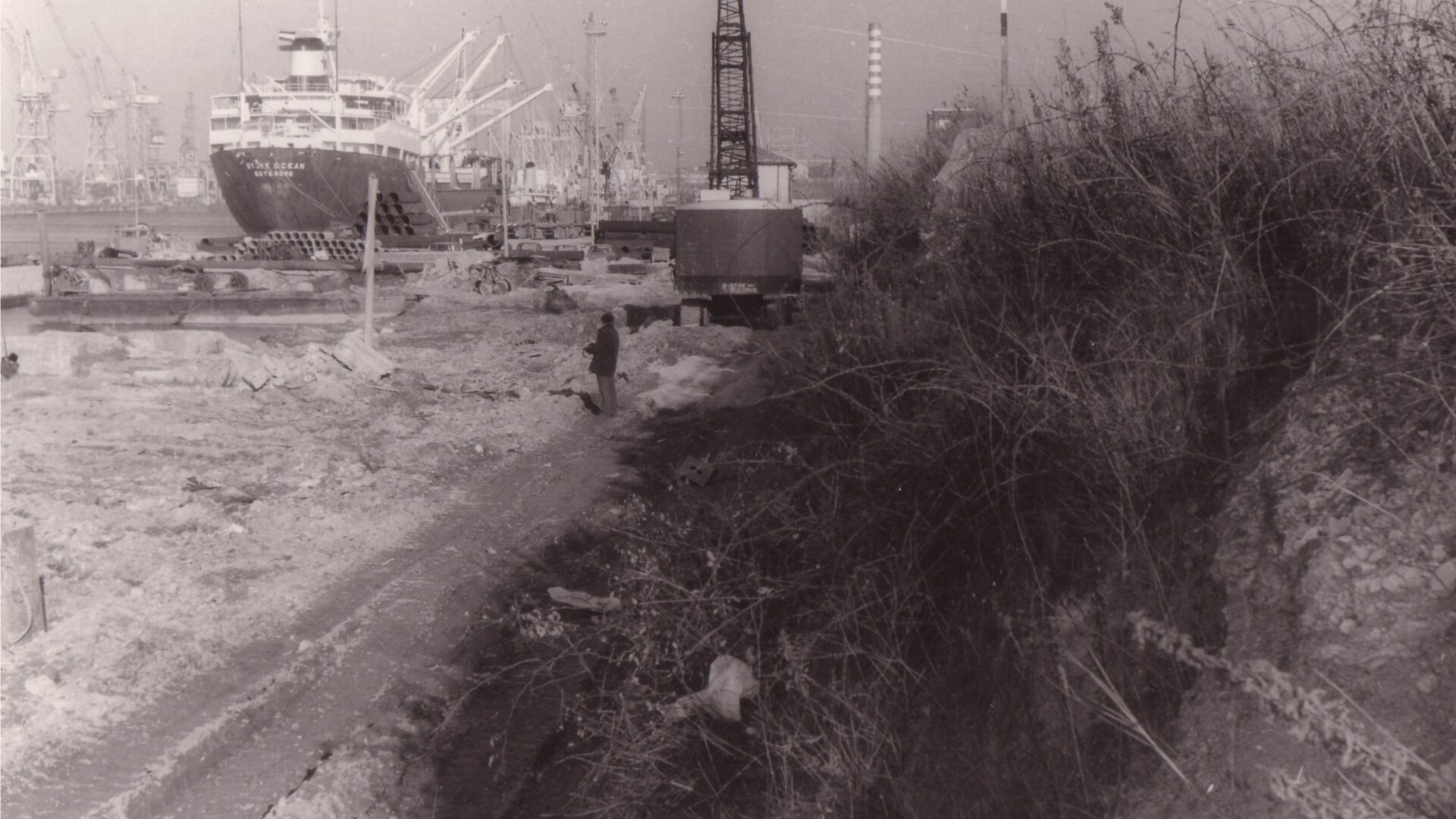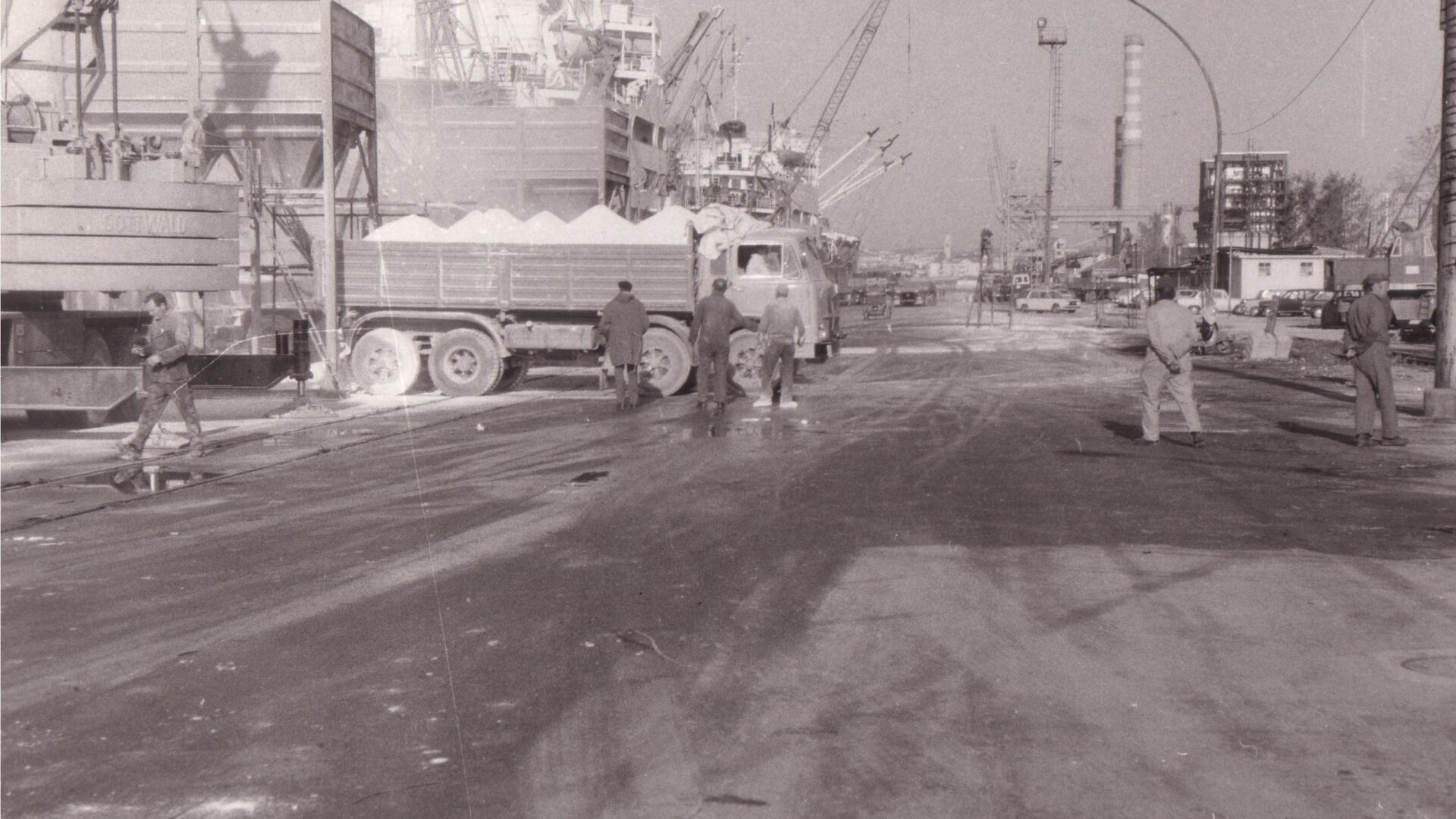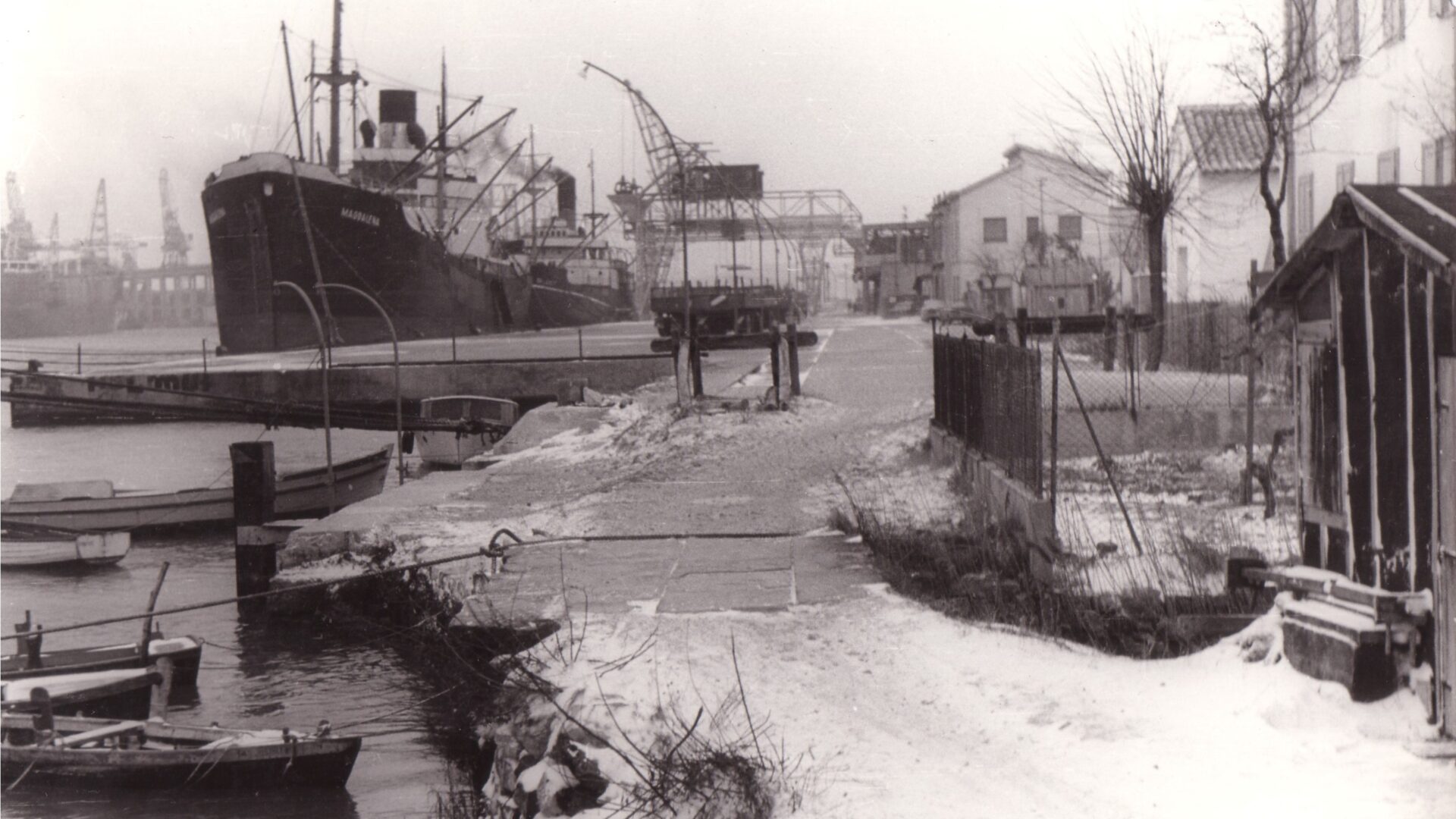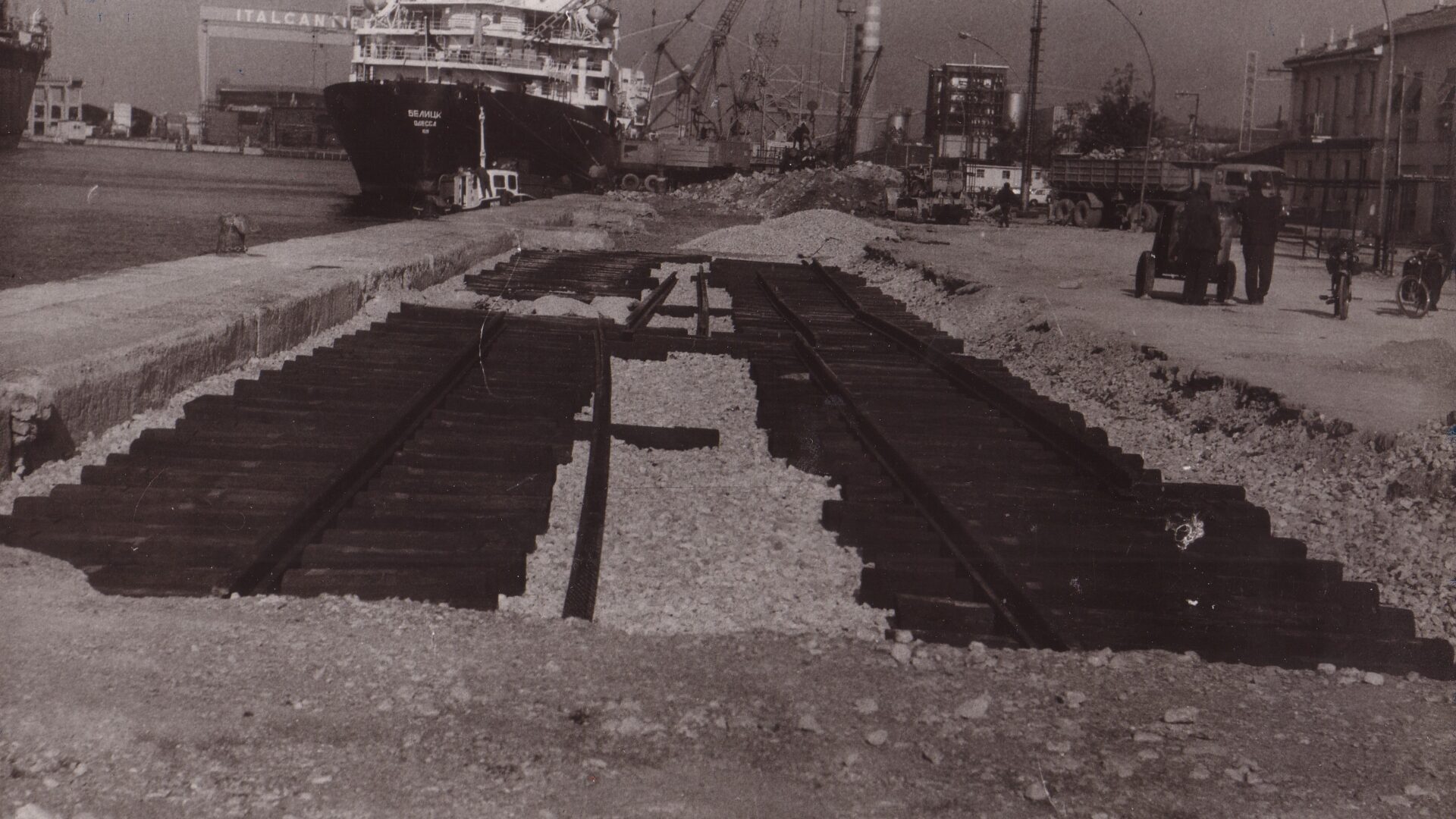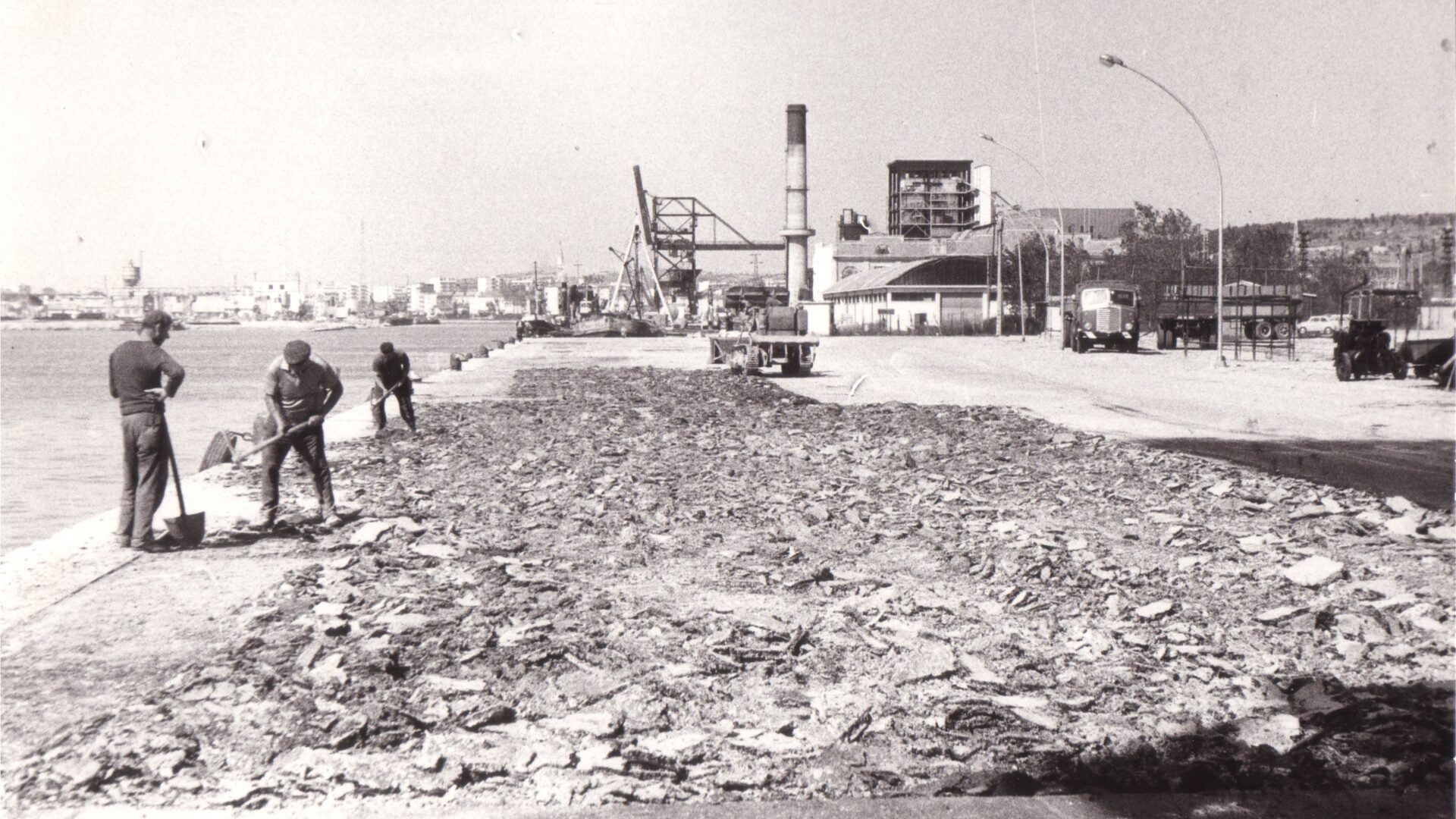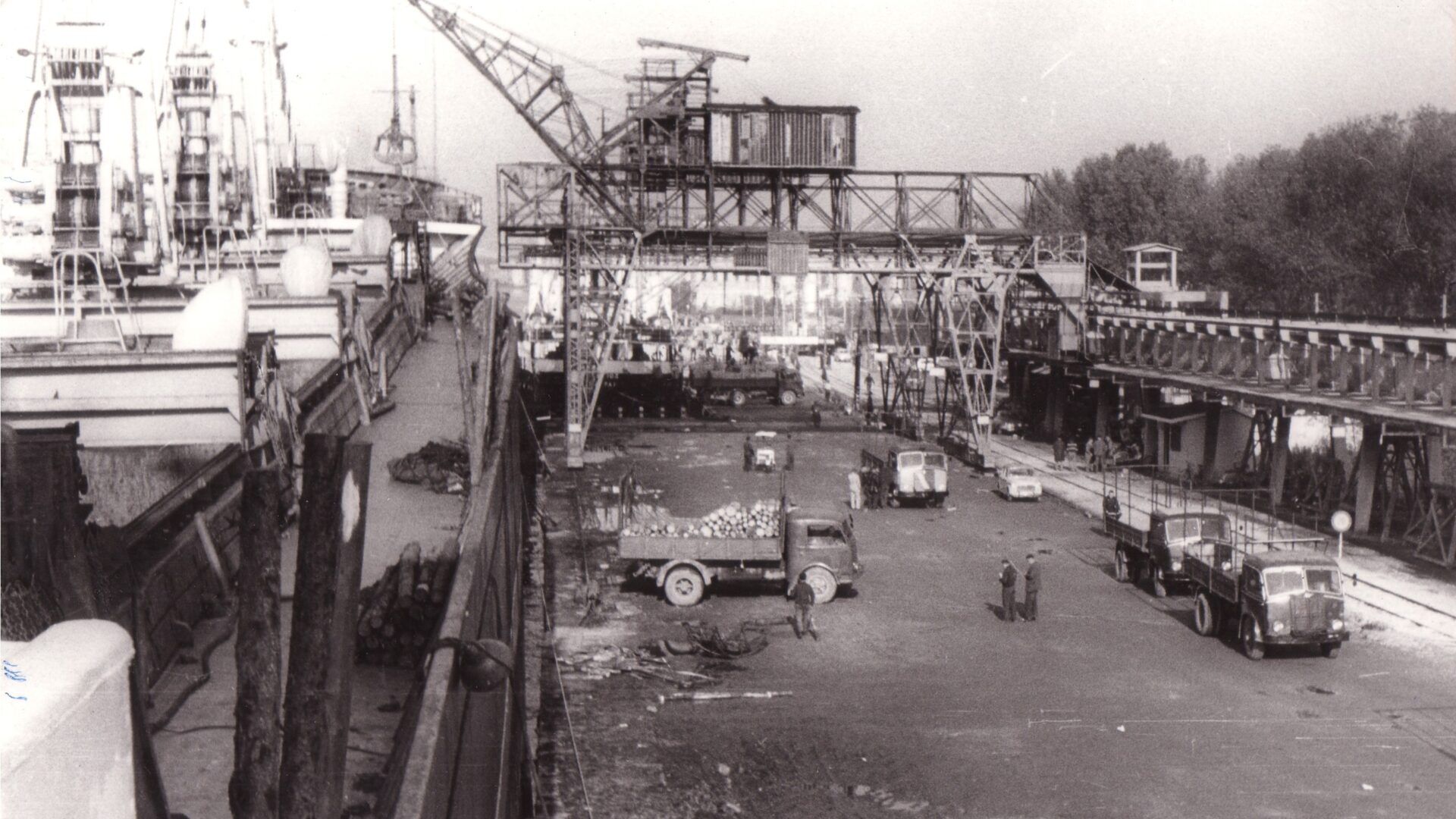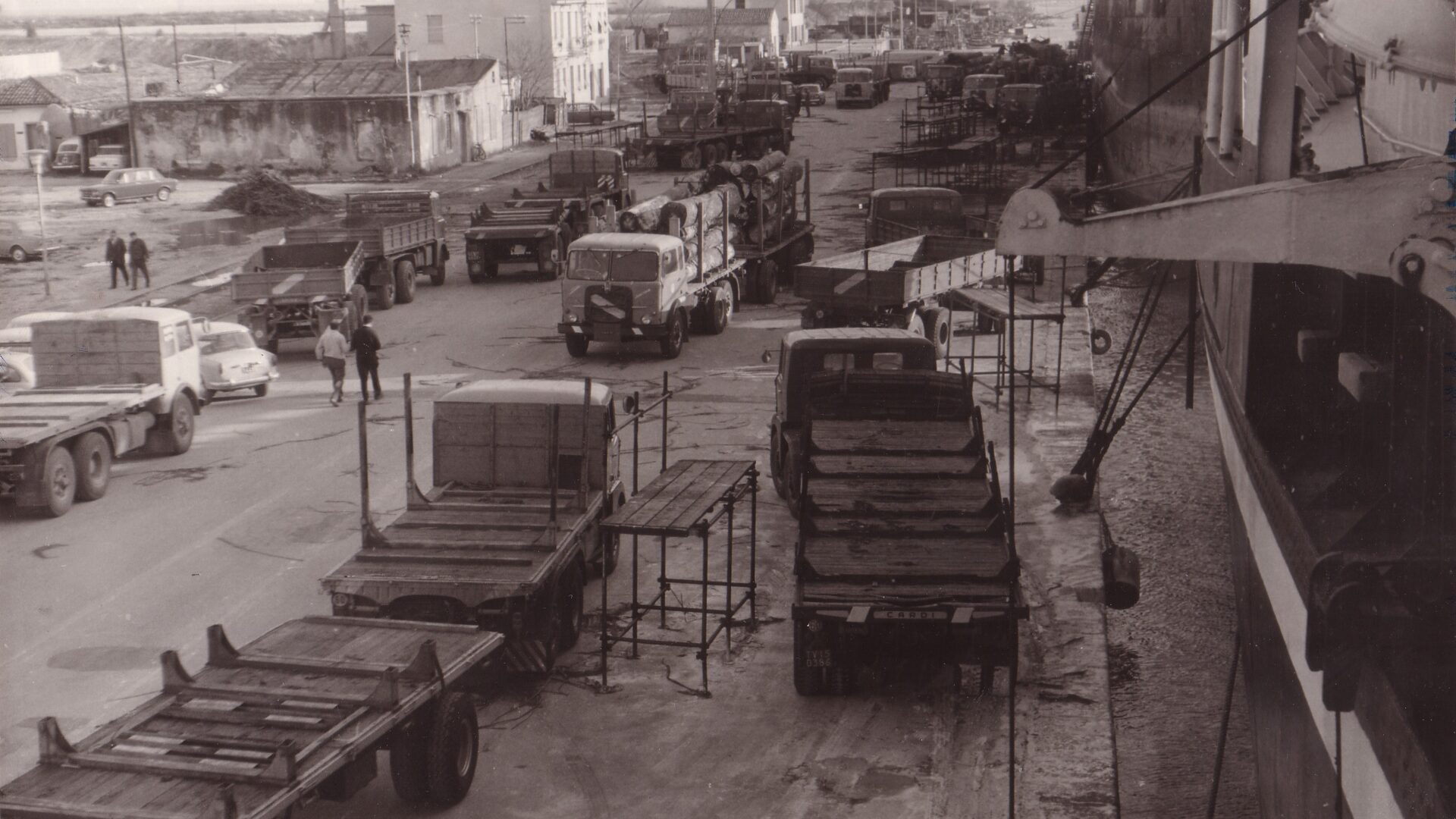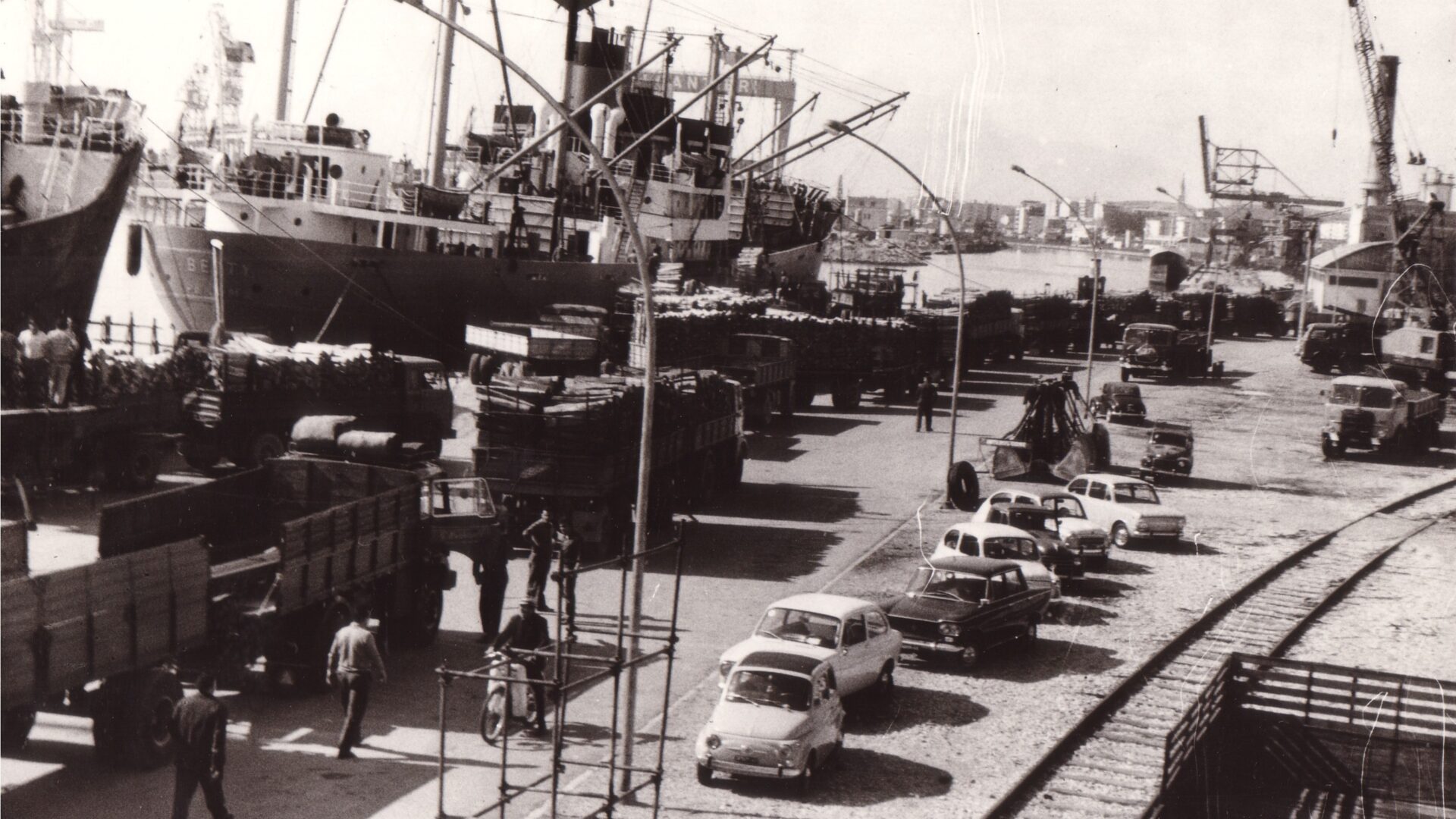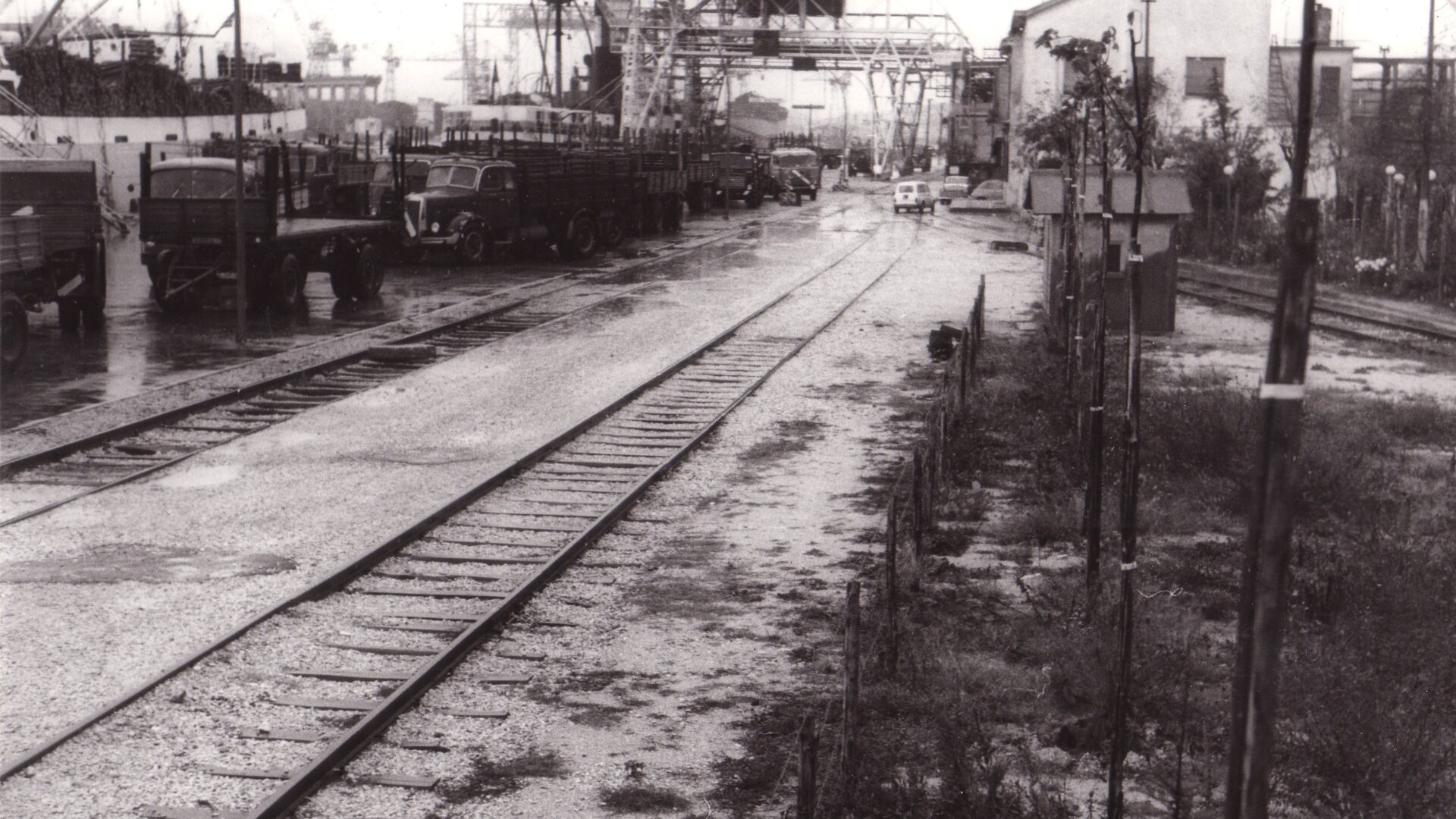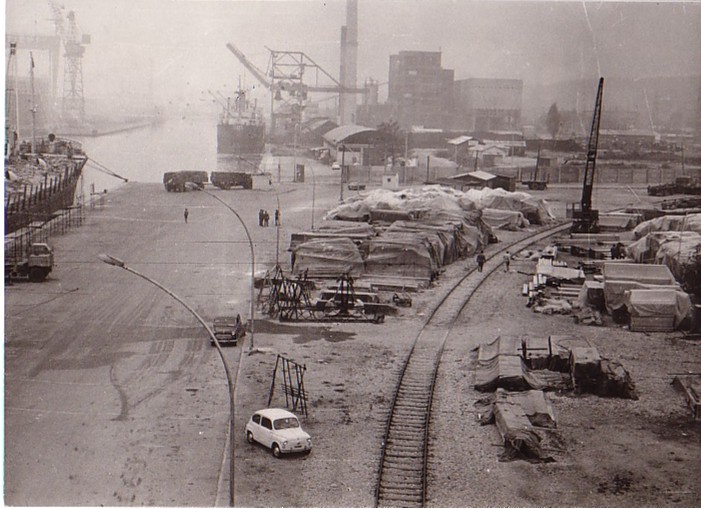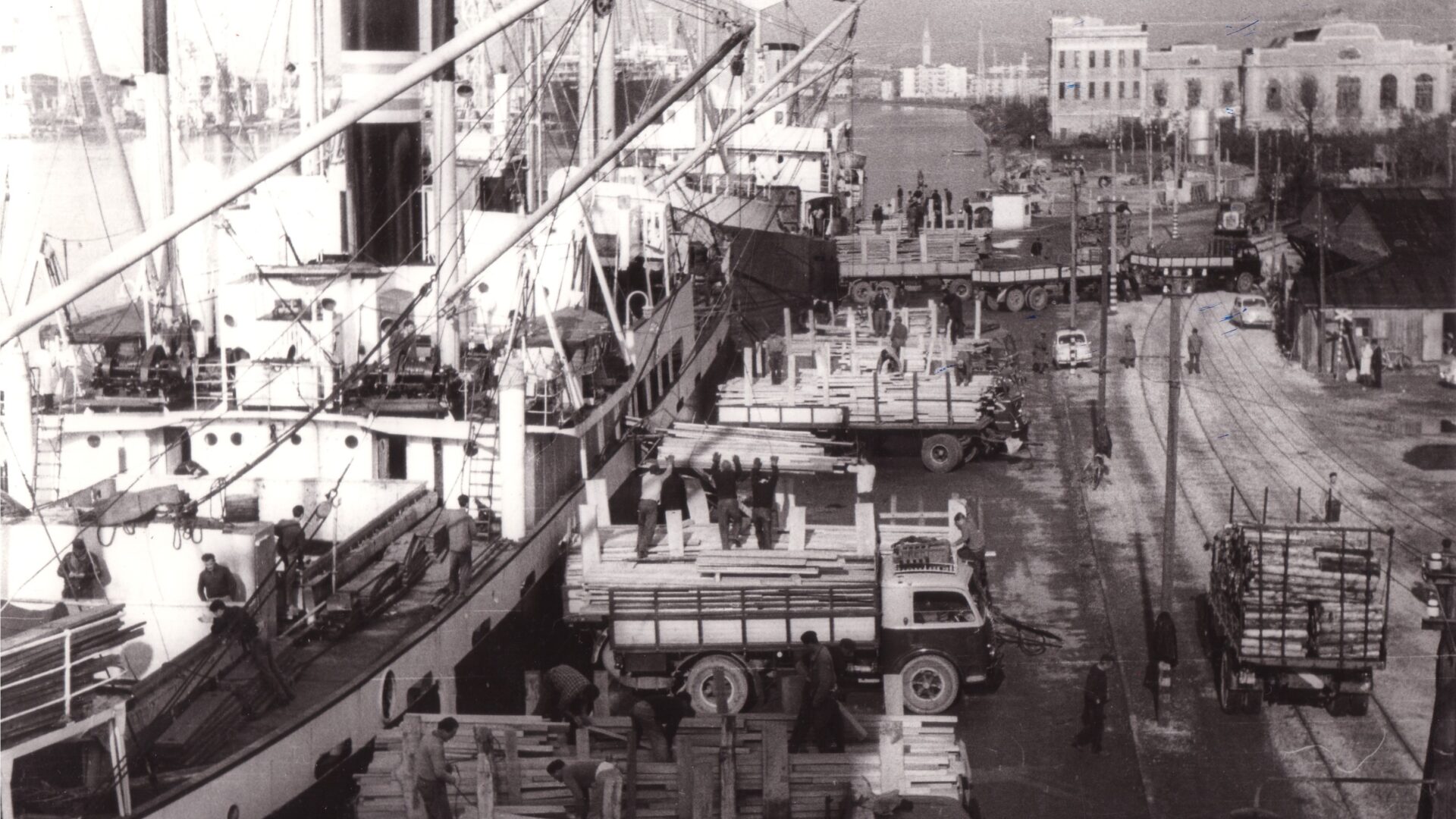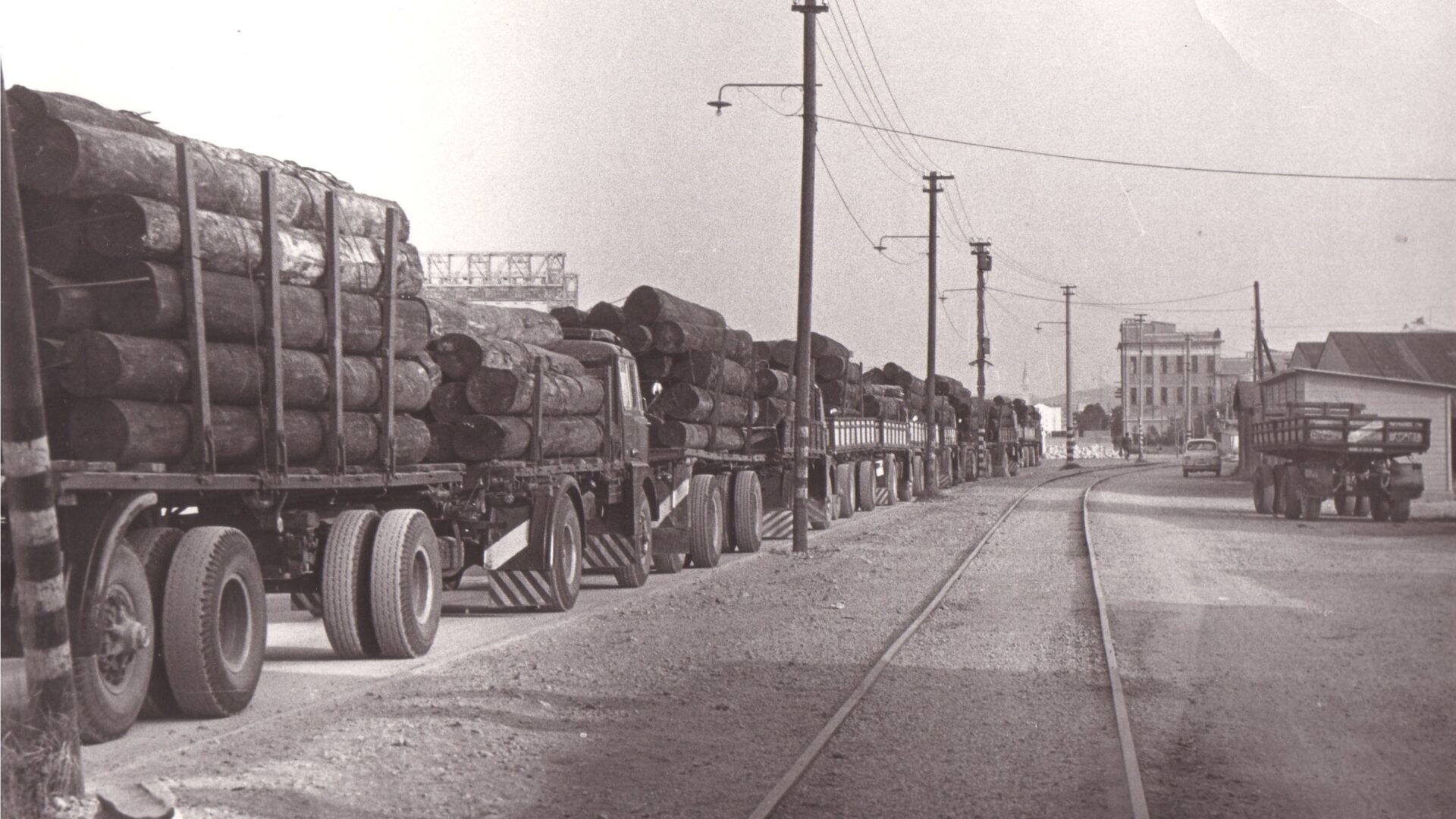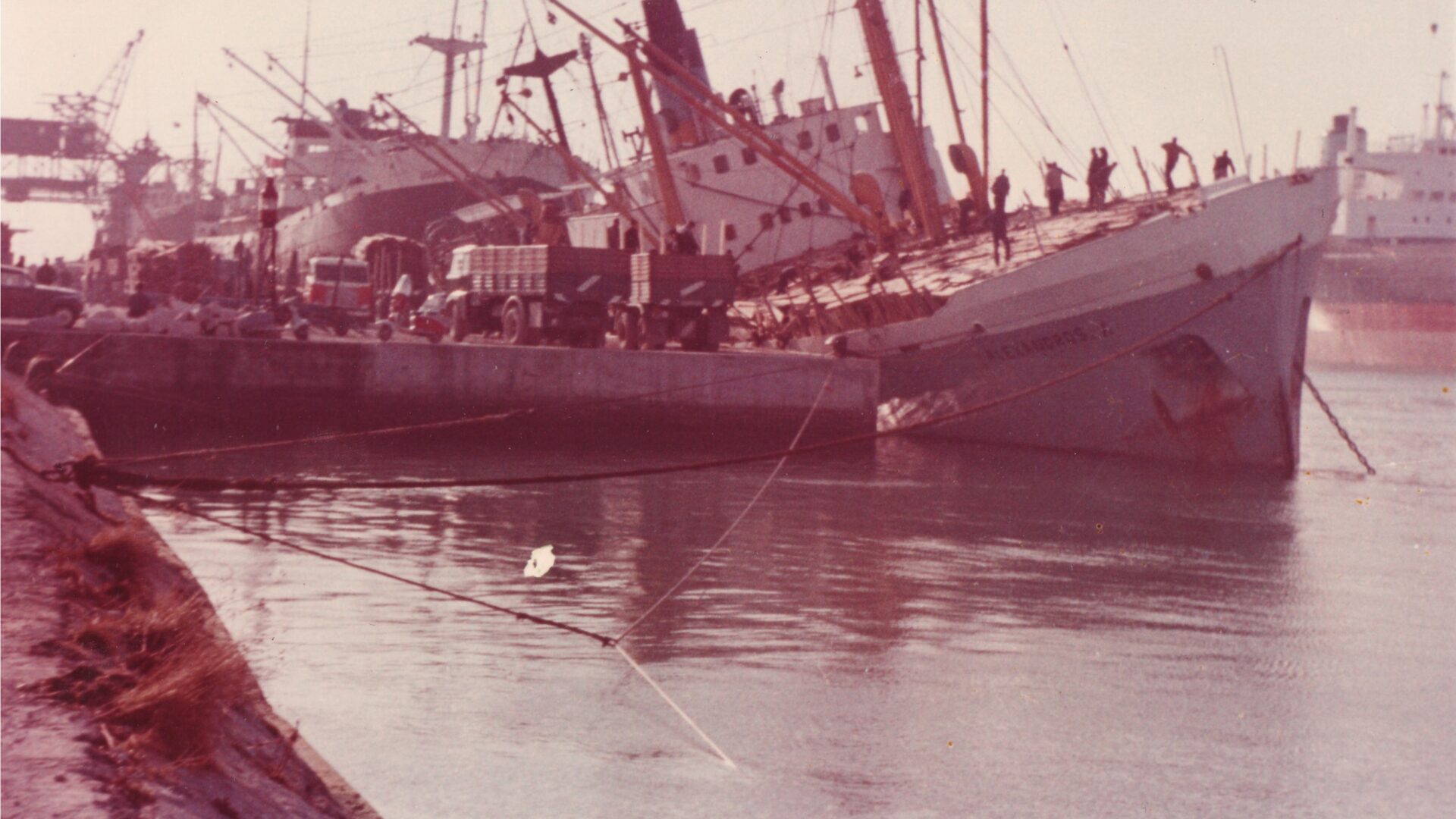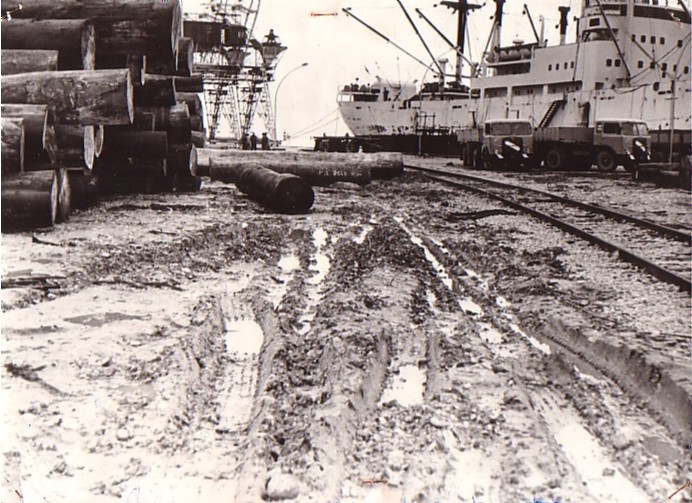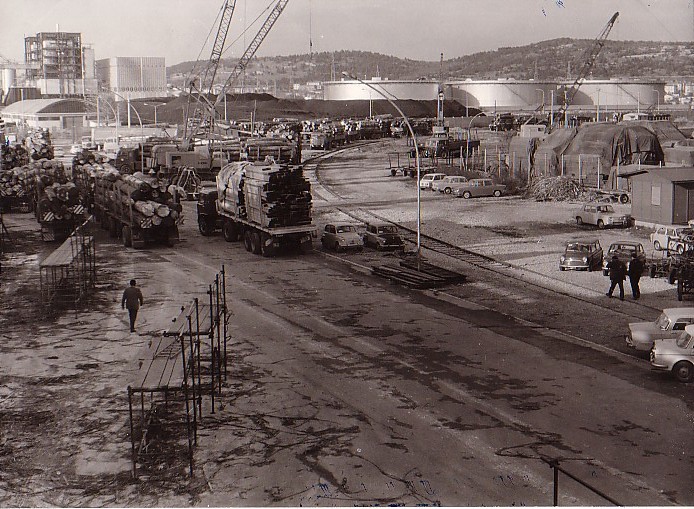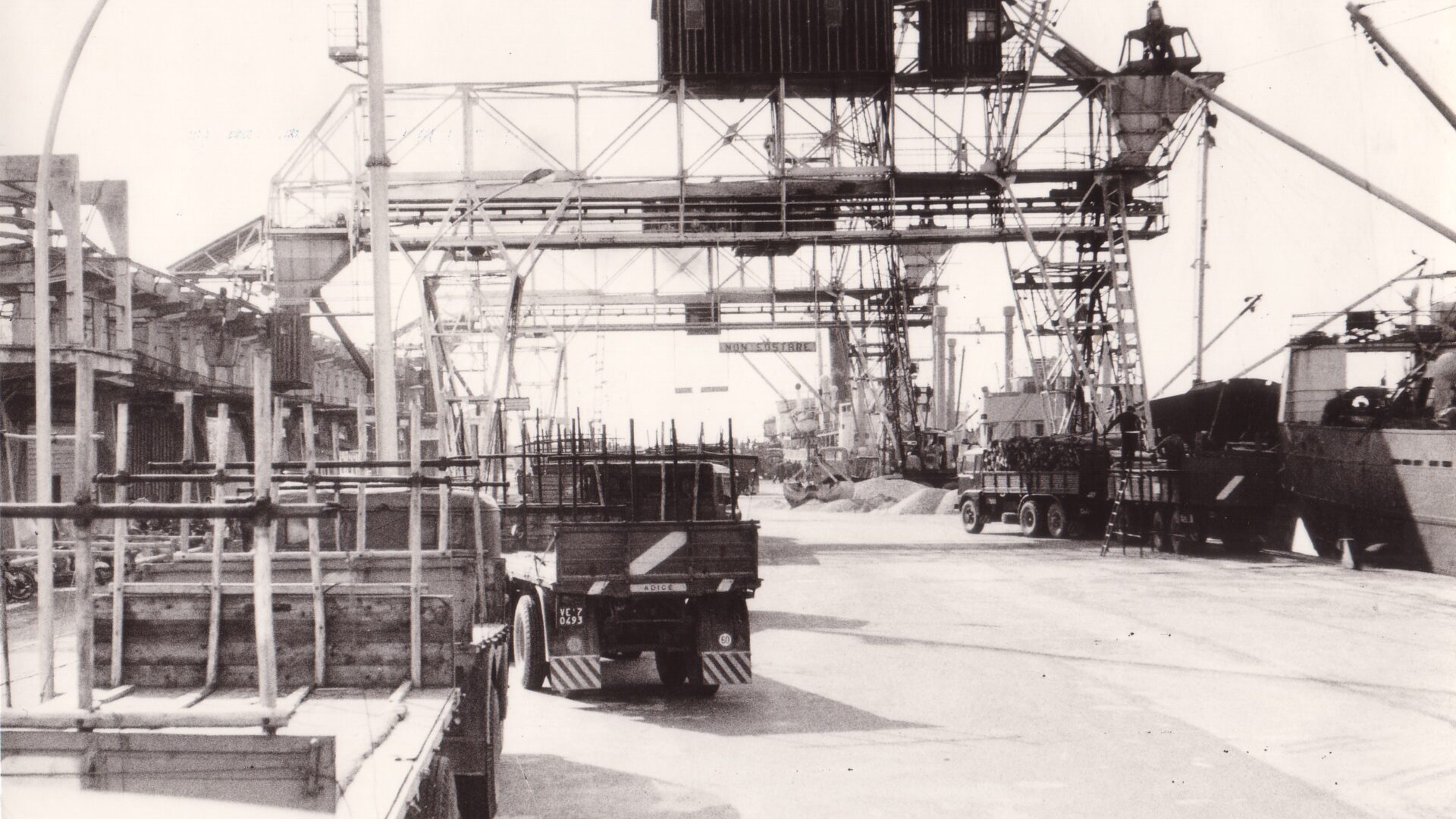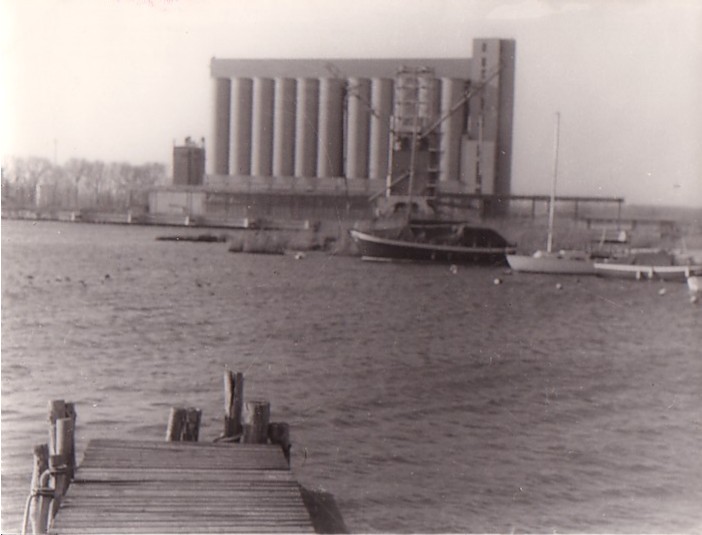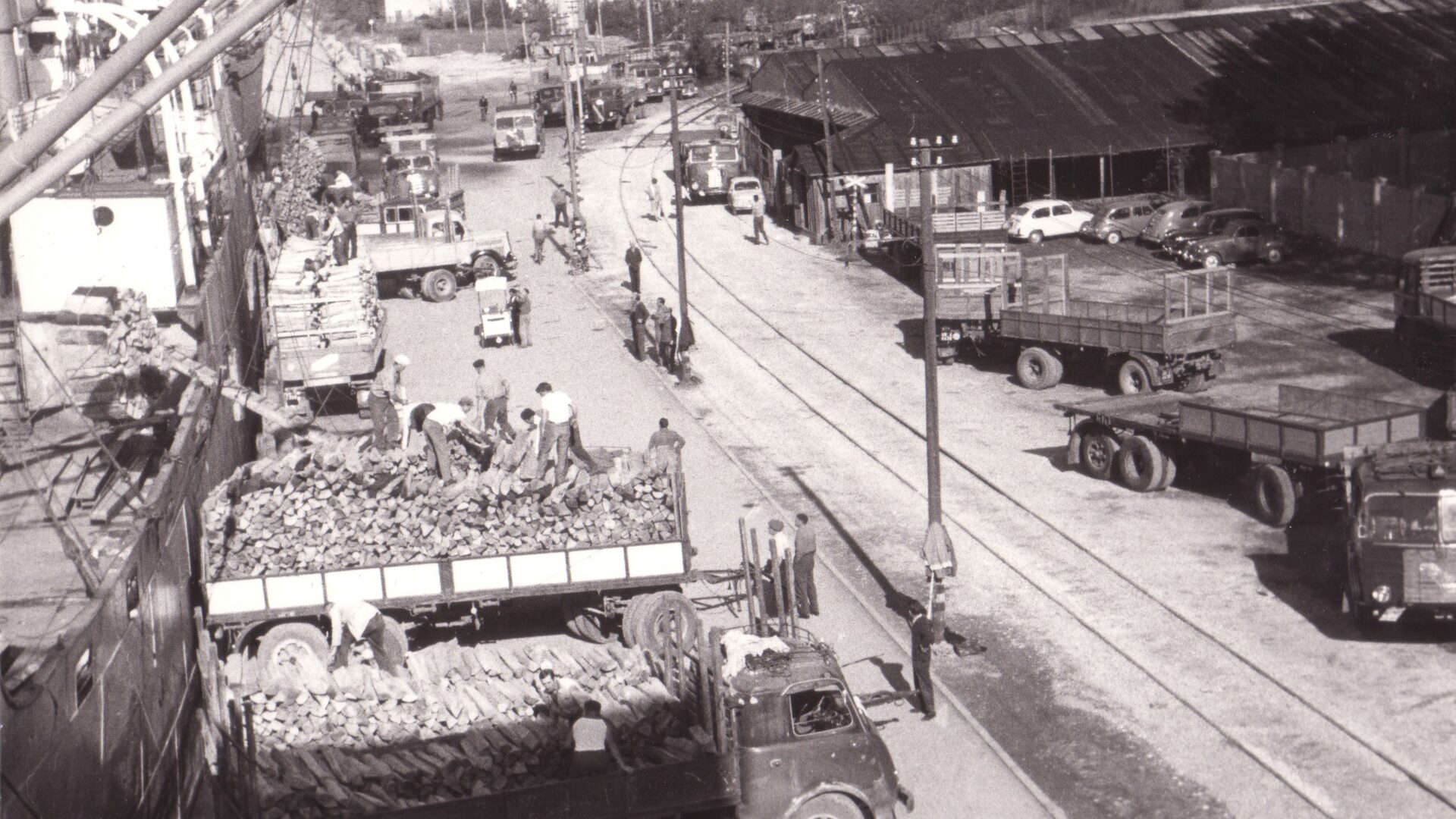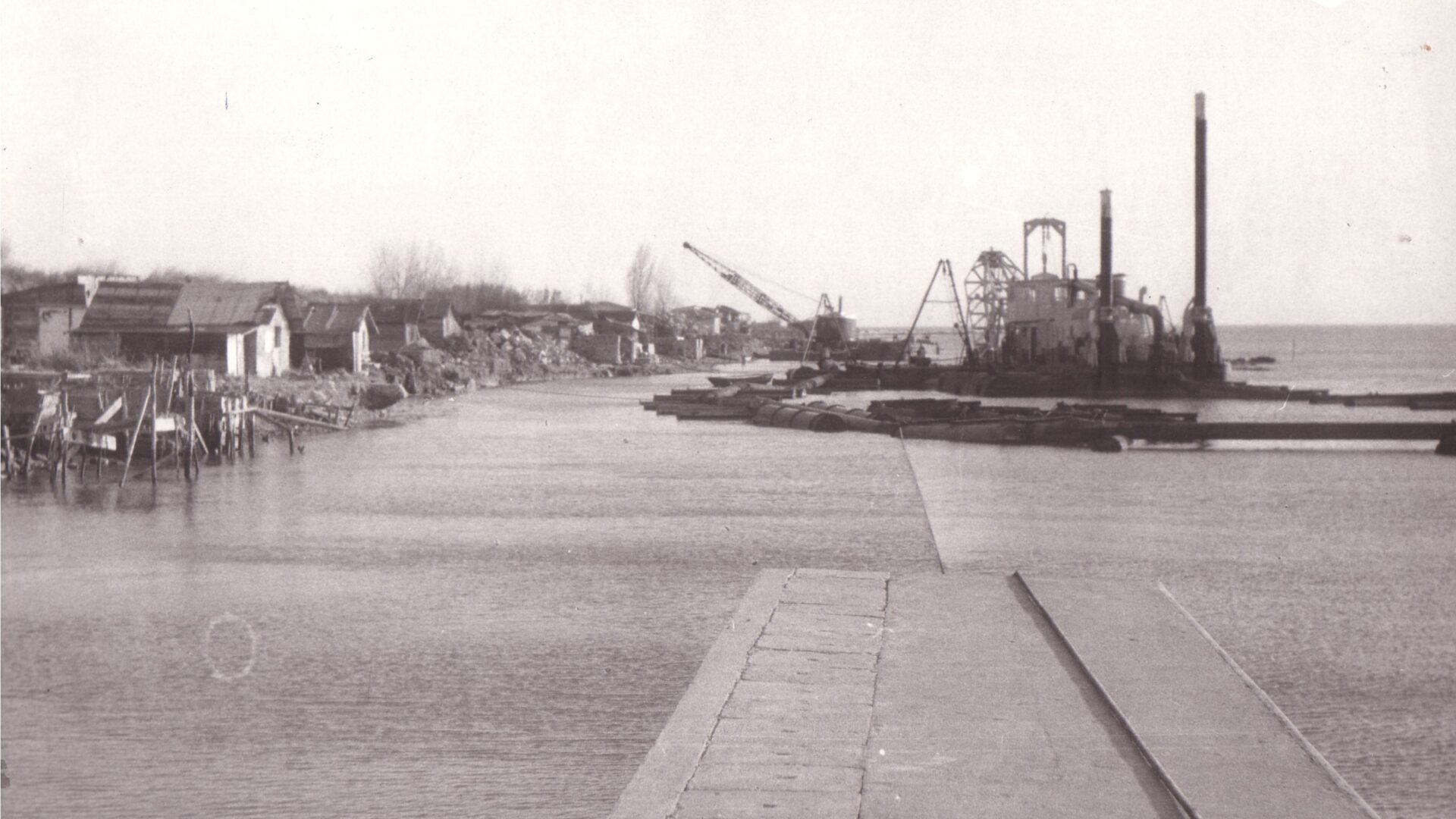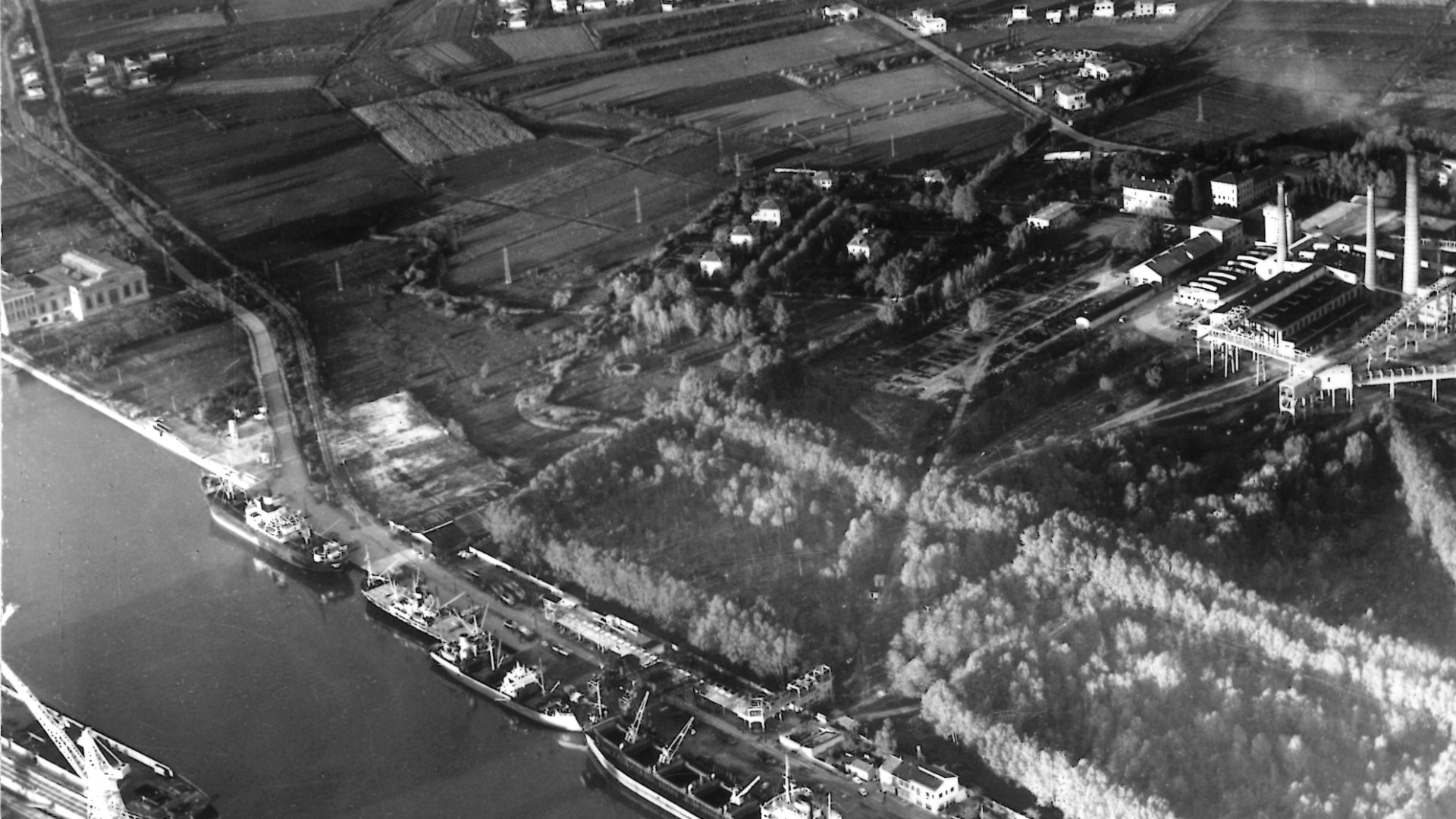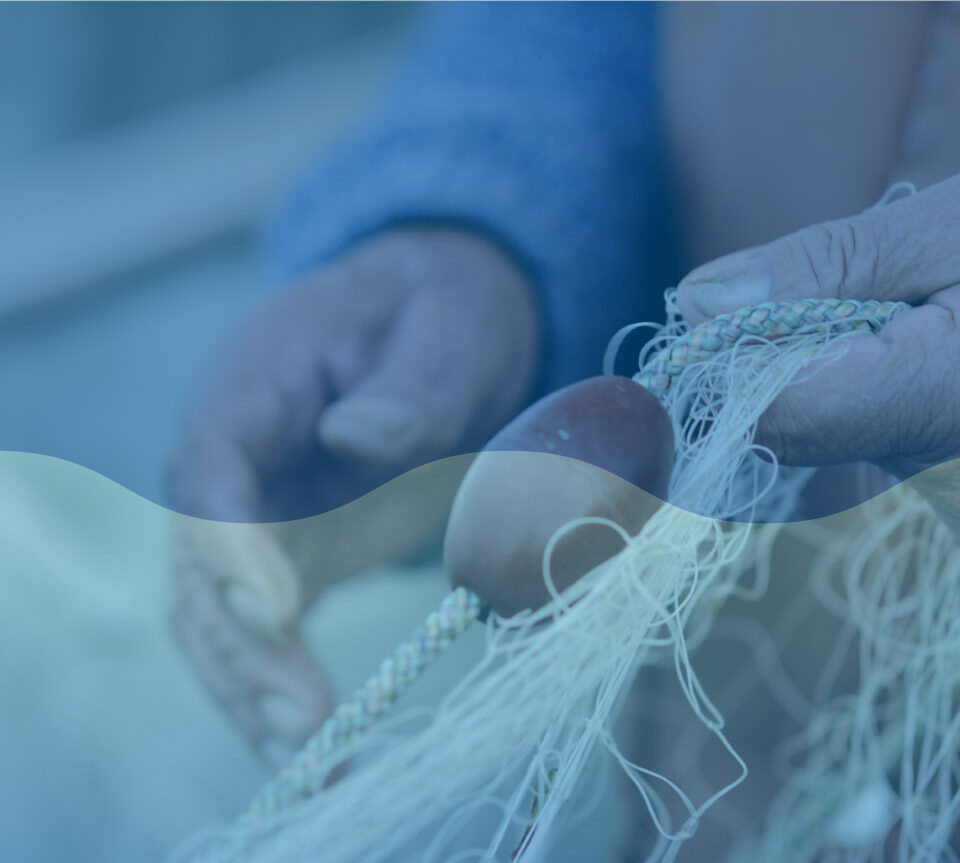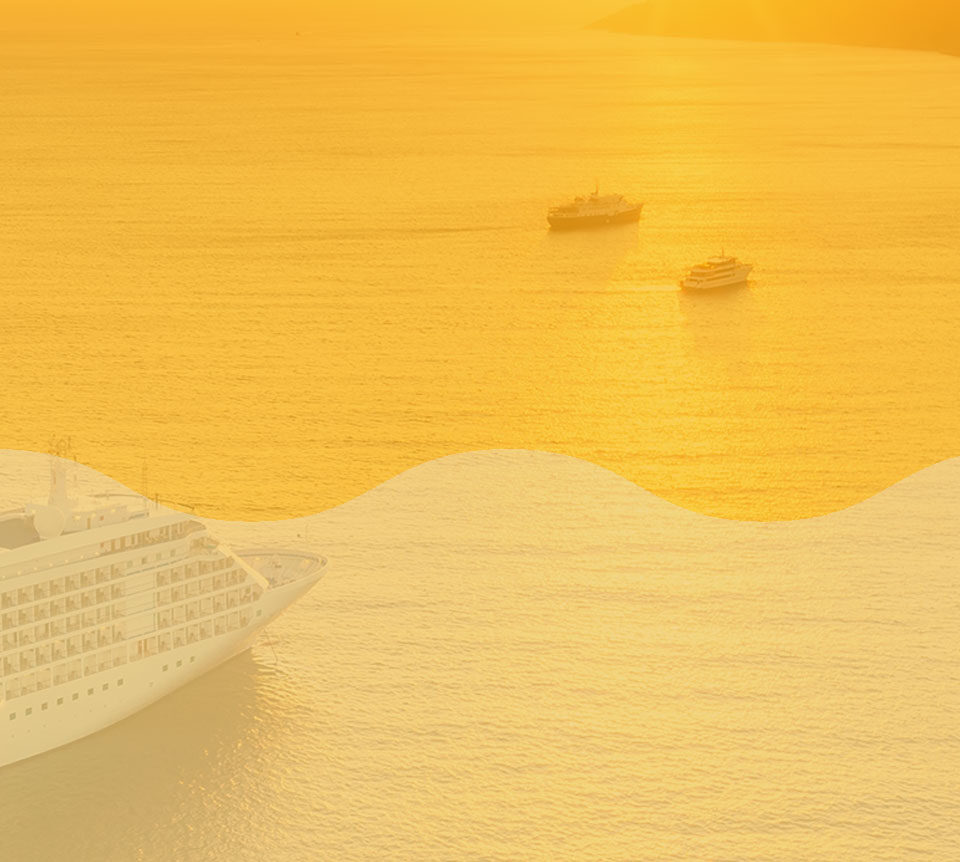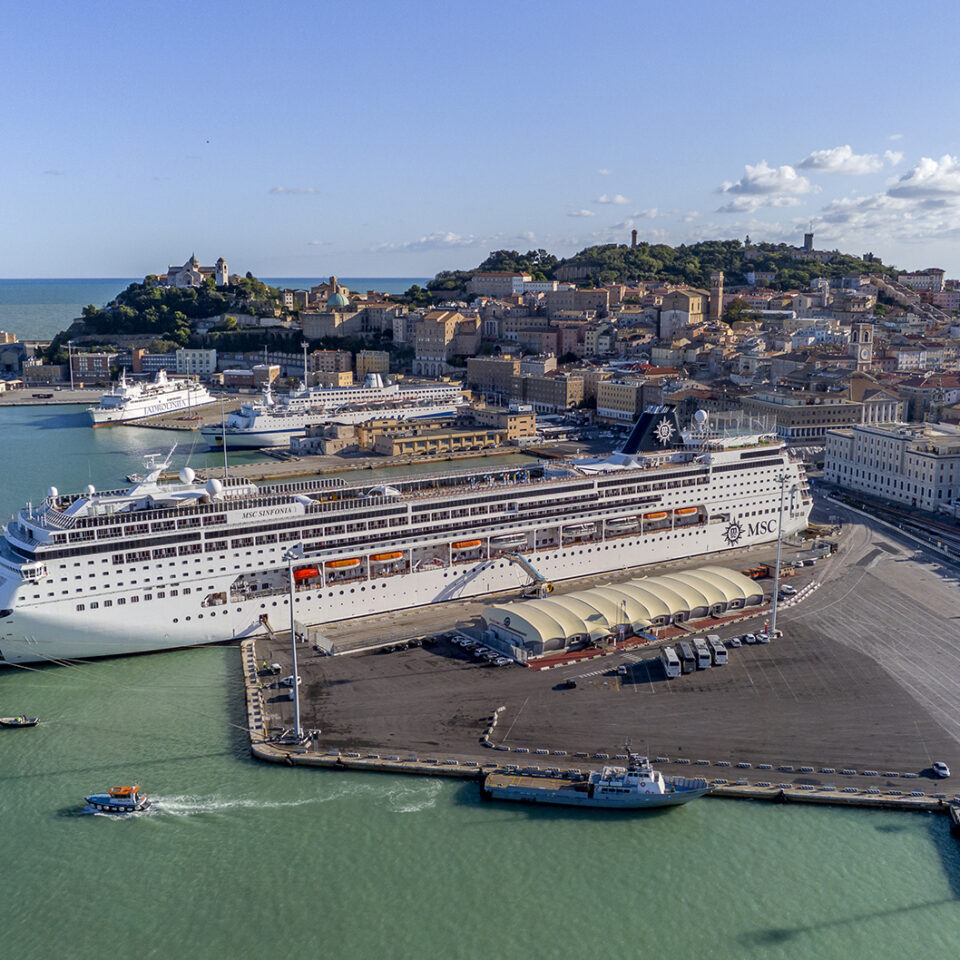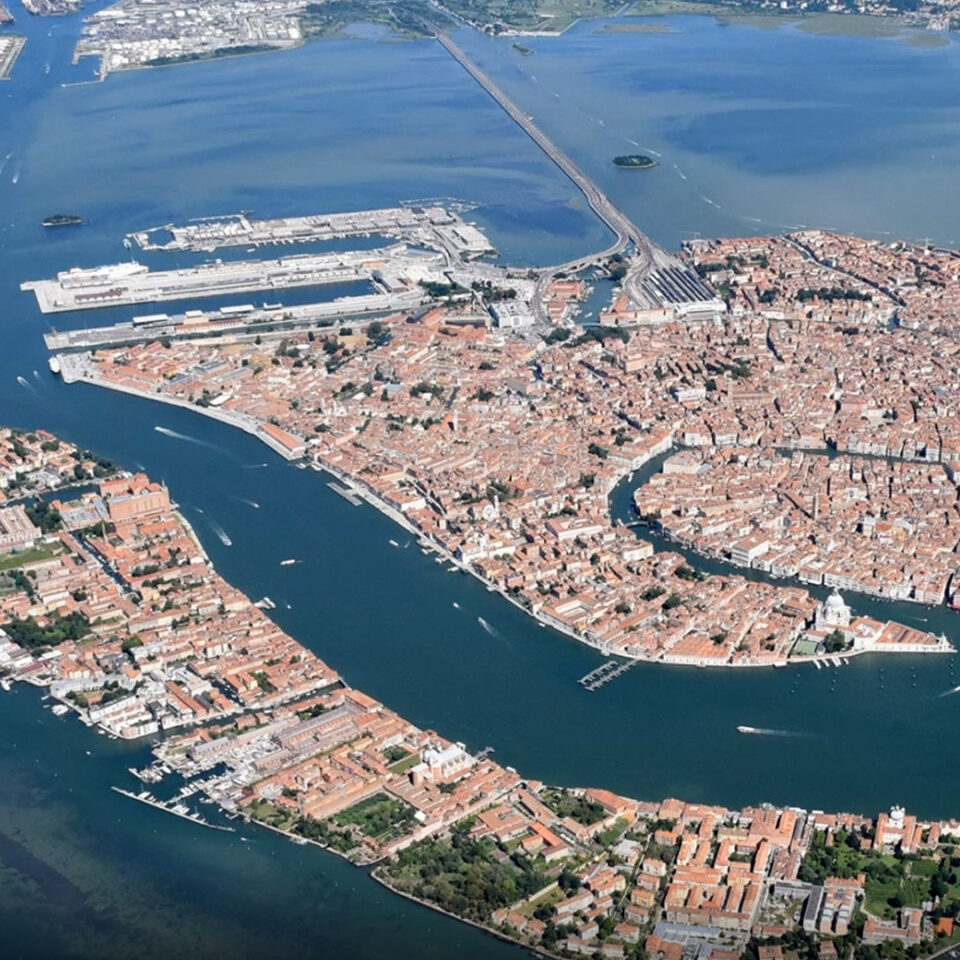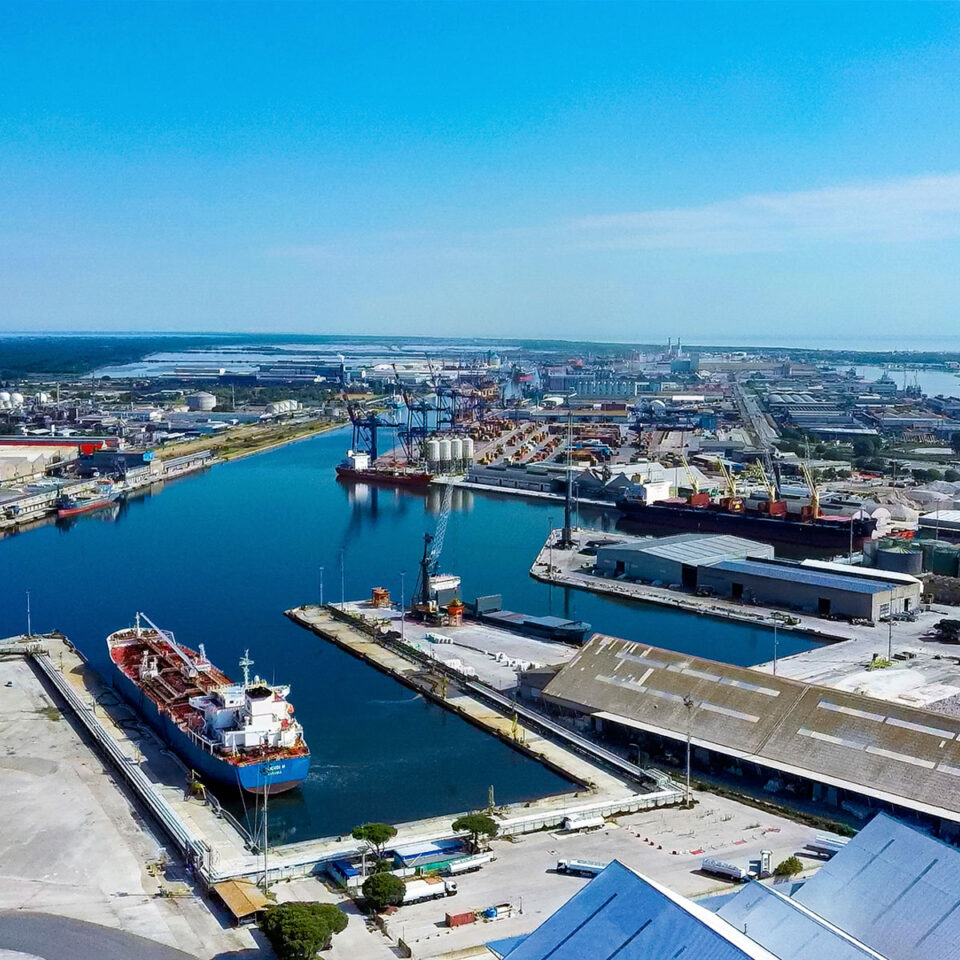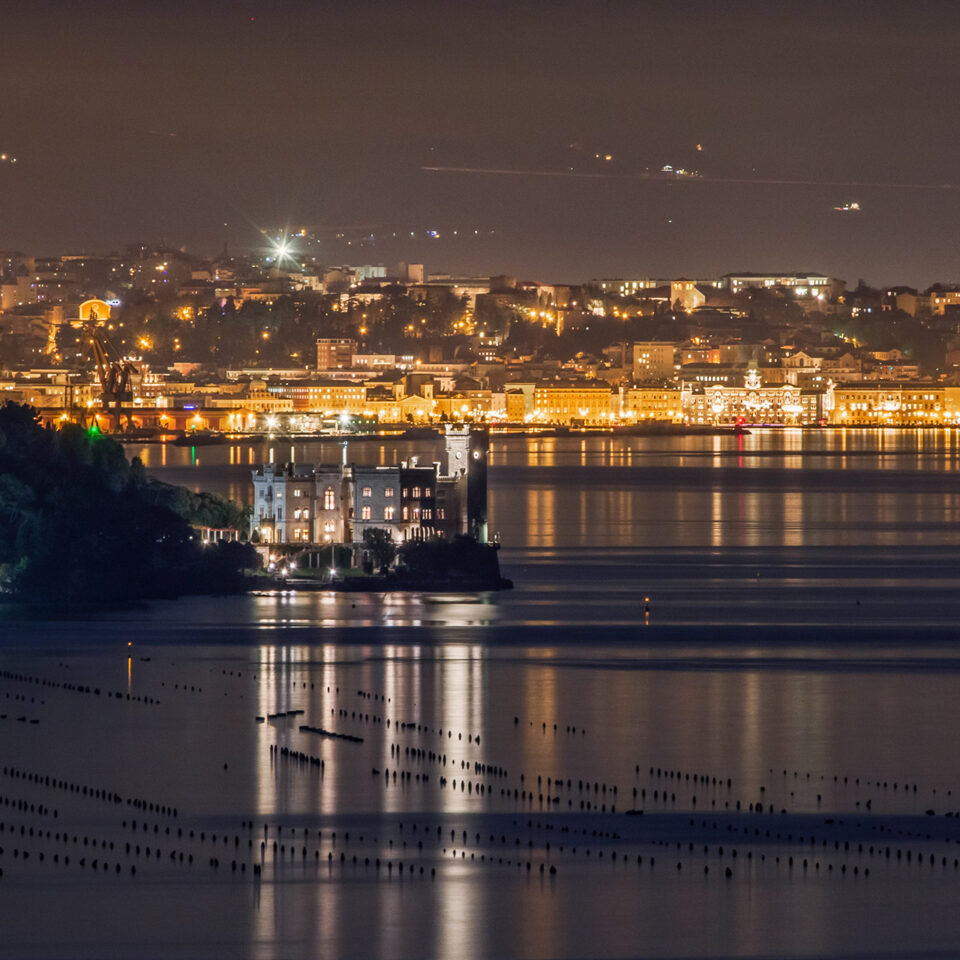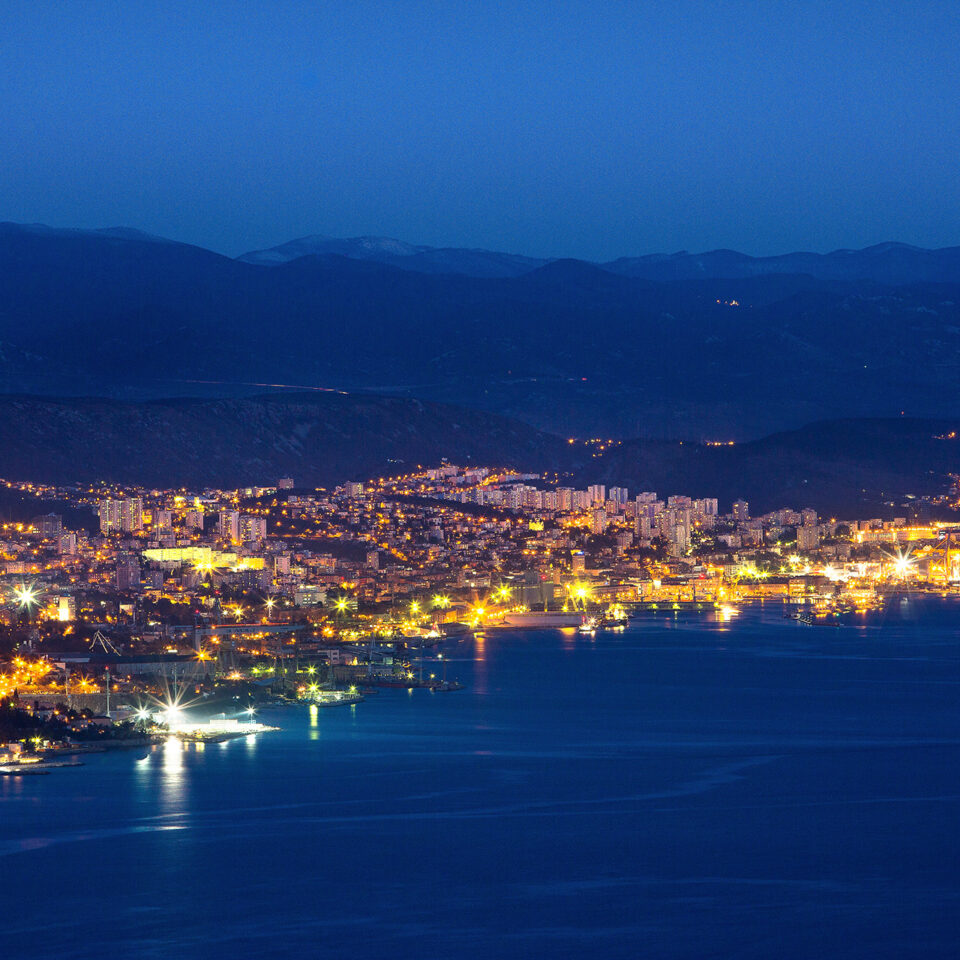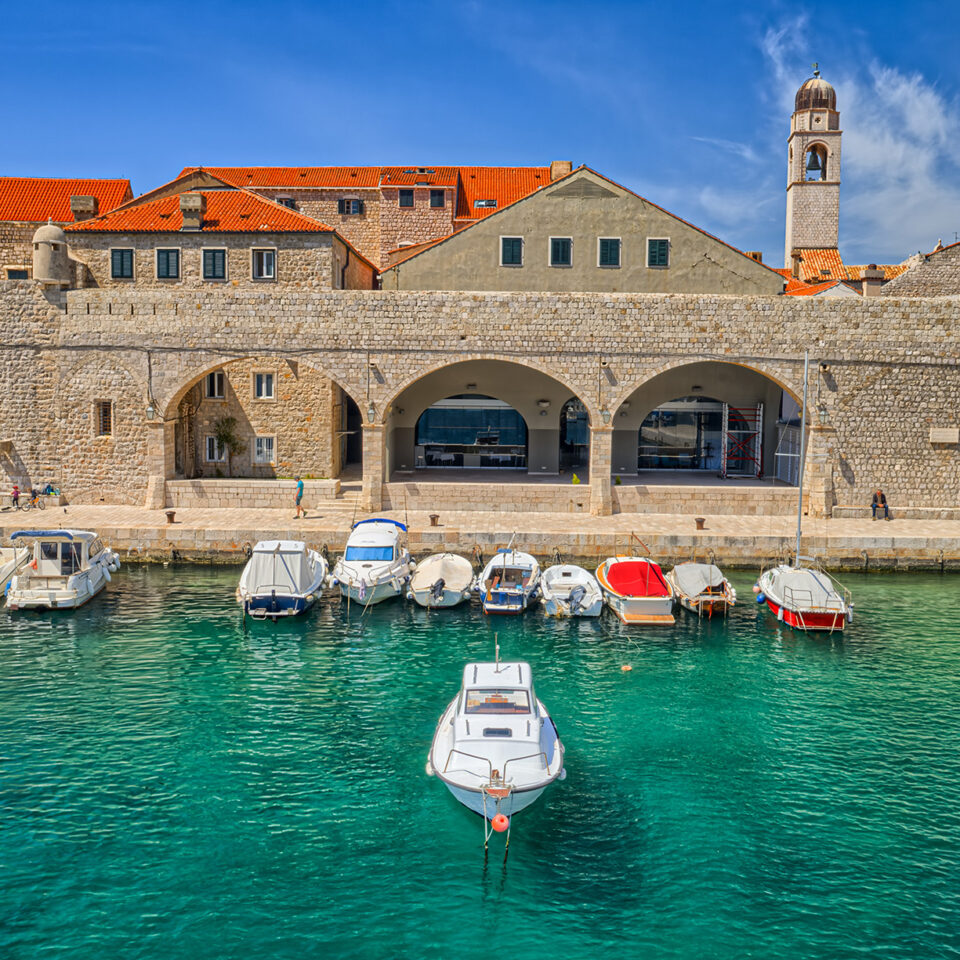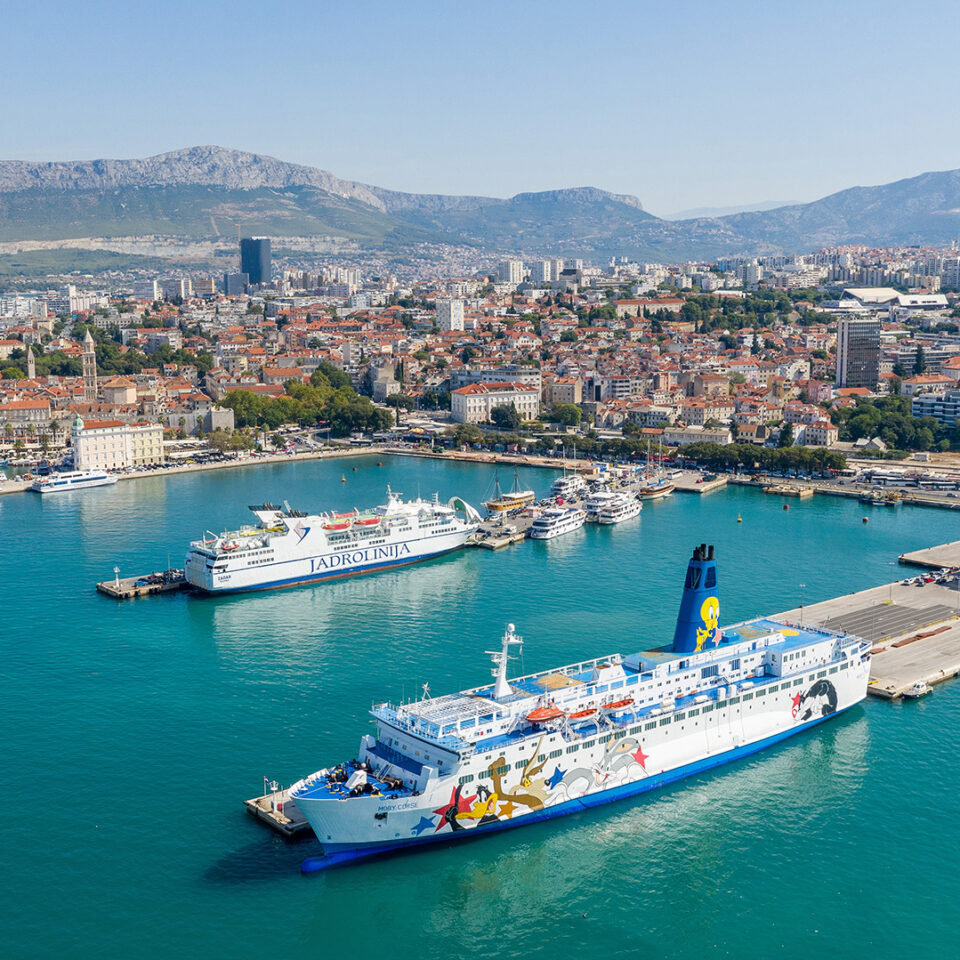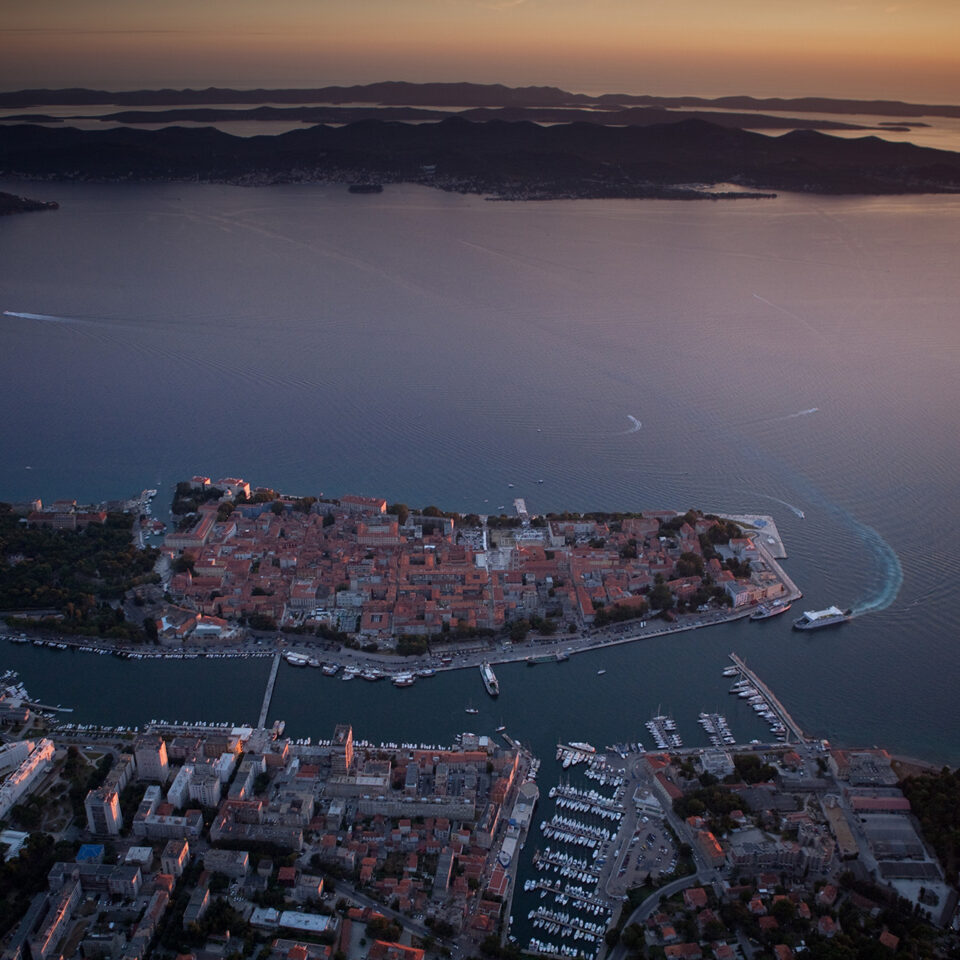


THE HISTORY OF THE PORT OF MONFALCONE
Observing maps from the 1500s onwards, various ports are present in the area from the Timavo river to the Isonzo one, even if all of little economic importance. It is necessary to wait until the nineteenth century for the first official assessment of the economic potential of a commercial port in Monfalcone and to see its birth. In 1806, in fact, a Napoleonic official, Cinzio Frangipane, analyzing the economic, demographic and commercial aspects of the area, noted the interesting opportunities. In 1825, the government of Vienna began to take an interest in Monfalcone by carrying out the first three significant interventions on the territory in favor of the future port: hydraulic arrangement of the land, reinforcement of the works of defense against flooding and sea storms, and the transfer of port activities from the Timavo river to Monfalcone and, specifically, to Porto Rosega.
In the years leading up to the First World War, the economic expansion of the Monfalcone area was witnessed with the construction of hydroelectric power stations, the excavation of the Panzano and Porto Rosega basins, the establishment of the chemical industry Adriawerke (later Adria Soda and then Solvay), activities that had a positive influence on the port and its traffic. The First World War left deep scars on the territory and on the port which, however, recovered and expanded in the following decade thanks to a series of interventions such as the excavation of the access channel to the port, the uprooting of rocky banks in the basin of Porto Rosega, the cutting of the isthmus separating the basins of Panzano and Rosega, the improvement of the communication road with the city center and the restoration of the railway connection with Ronchi dei Legionari. Thanks to these interventions, other productive factories settled down in the area, such as the Oleificio Adriatico Luzzatti and the chemical factory Breitner.
In the decade between 1930 and 1940 the economic growth consolidated, thanks to an industrialization progress that found its main factor in the shipbuilding industry which still remains a distinctive activity of the local territory. Around the ’50s the scenario changed and, next to the shipbuilding industry, a phase of rapid growth of the port traffics occurred. The main goods handled were: gravel for cement, salt for industry and timber which in the following years became one of the main traffic of the port. Starting in the 1960’s, the mechanization of port activities led to a significant leap in the quality of the port of Monfalcone. Equipments such as mechanical diggers and lifters were introduced which increased considerably the landing yields and the efficiency of port operations.
In the 1970s, the channel’s draught was increased thanks to dredging while the quay was asphalted and extended by 300 metres towards Trieste. With these works, the port reached its current shape; the development of its traffic continued and diversified considerably in the following decades, becoming the important reality it is today. Photo Credits: CCM – Consorzio Culturale del Monfalconese; Archivio Compagnia Portuale S.r.l.; Bencina
The Port of Monfalcone today – video

